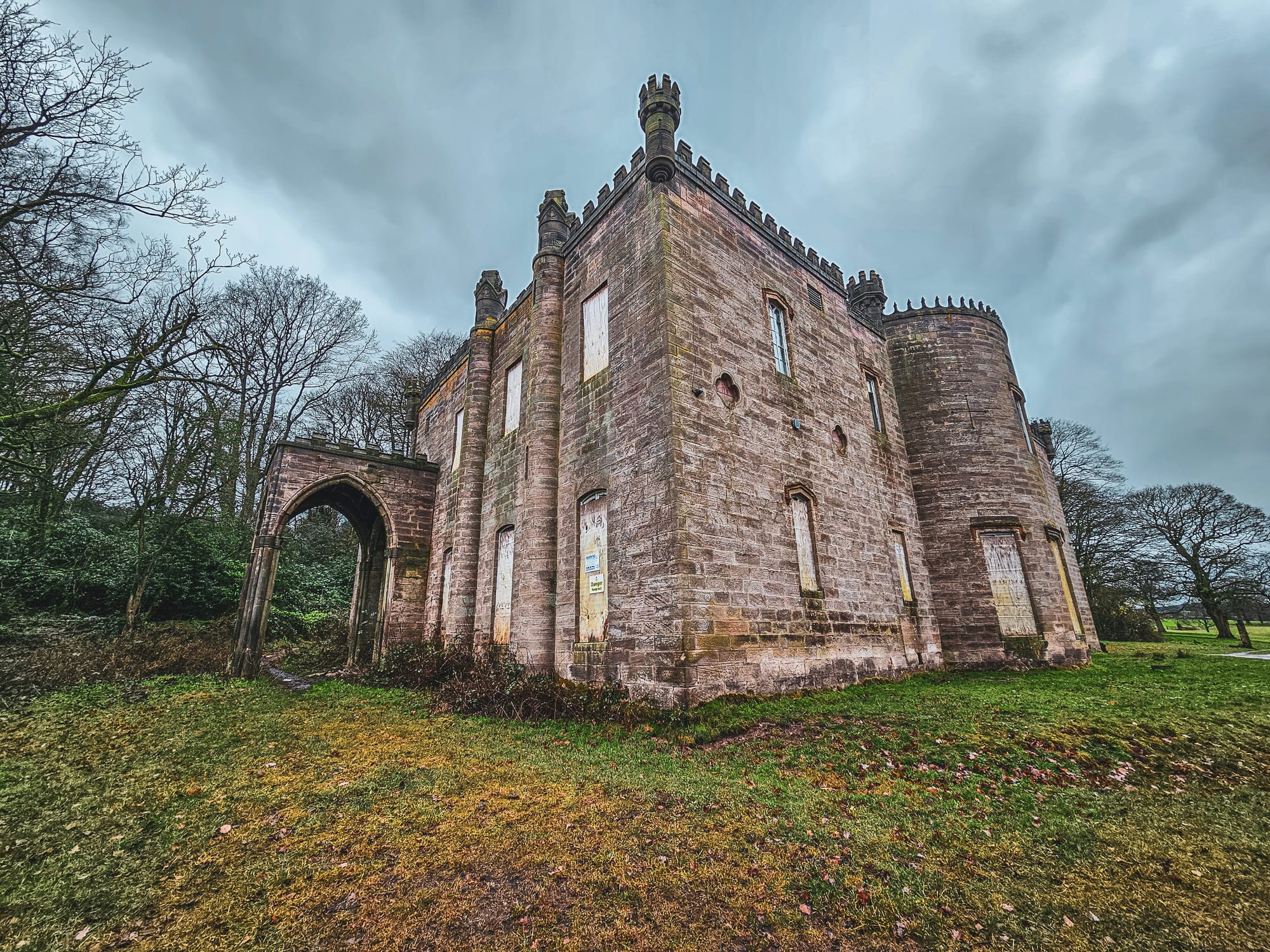Cliffe Park Hall is an architectural gem nestled above the picturesque Rudyard Lake in Staffordshire. The lake itself inspired the naming of one of England's most celebrated authors, Rudyard Kipling, chosen by his parents who met at one of the lake's Victorian tea parties.
Built in 1811, this Grade II listed building has undergone various transformations, each reflecting different societal and historical periods. Originally established as a private residence by John Haworth, a wealthy merchant, Cliffe Park Hall has since served multiple roles, including a golf clubhouse and a youth hostel, adapting to the changing needs and times.
Watch the video here;

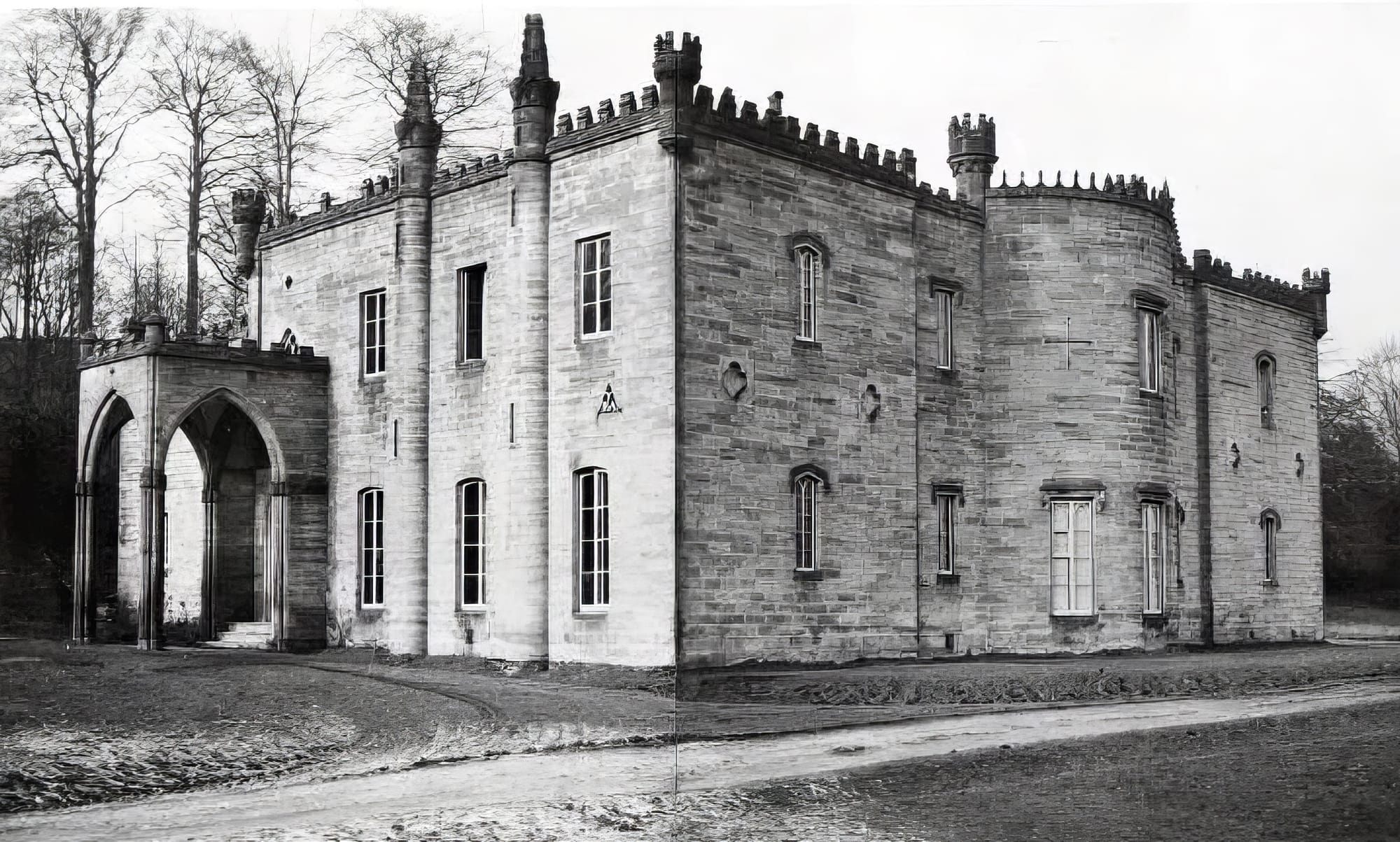
The hall's architecture is a notable aspect of its heritage. Combining Neo-Gothic and Georgian styles, it showcases the design trends and preferences of the early 19th century. These architectural features not only add to its aesthetic appeal but also provide insights into the historical context of its construction and subsequent modifications.
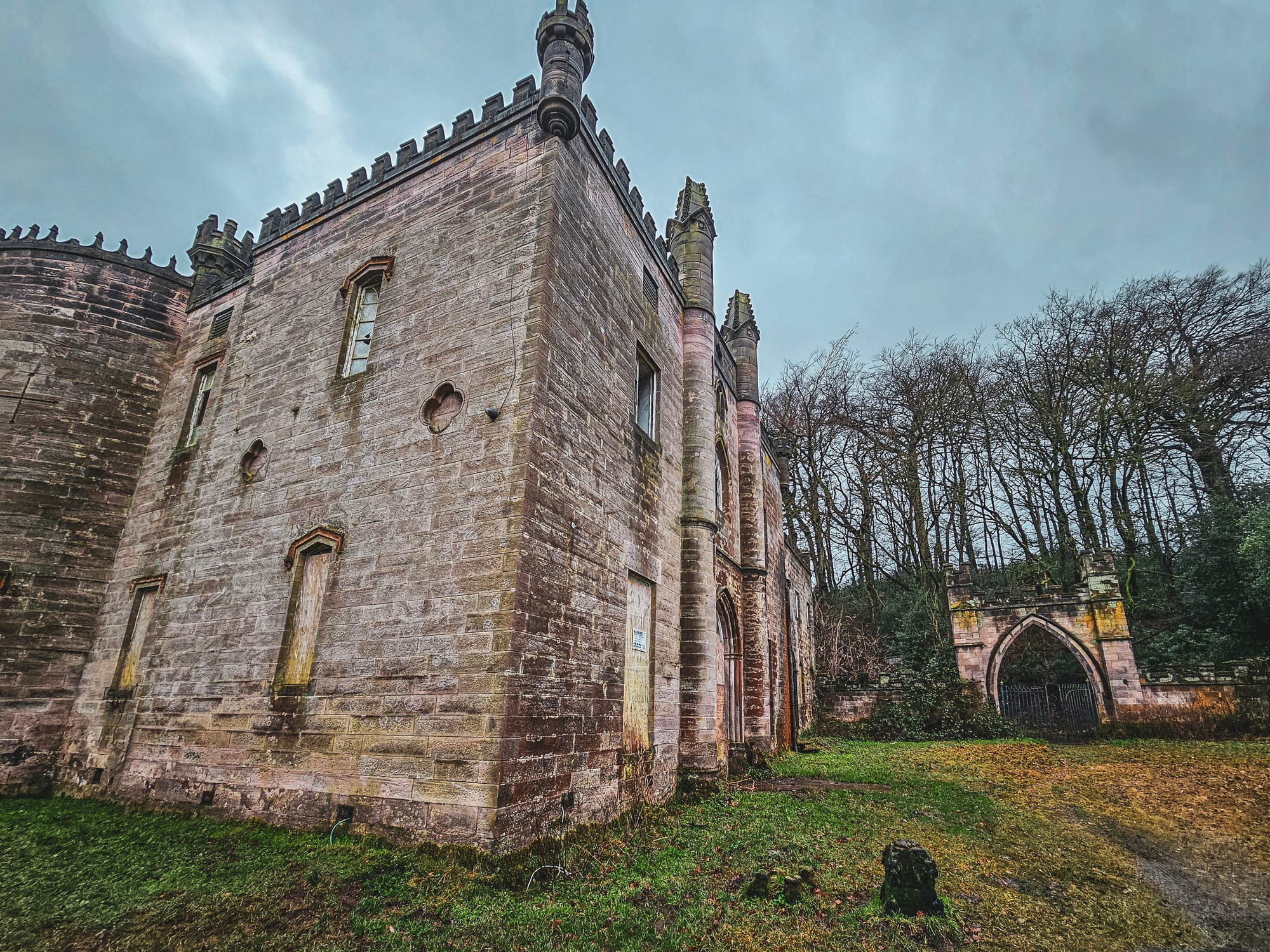
Throughout its history, Cliffe Park Hall has been at the centre of various significant events and changes in the local community. From legal battles fought by Fanny Bostock to preserve the tranquillity of Rudyard Lake to its transformation into a social and recreational hub, the hall reflects the dynamic nature of the area's history.
As we explore the hall’s past, we gain a clearer understanding of how Cliffe Park Hall has both shaped and been shaped by the events and people of Staffordshire and hopefully it will still have a future.
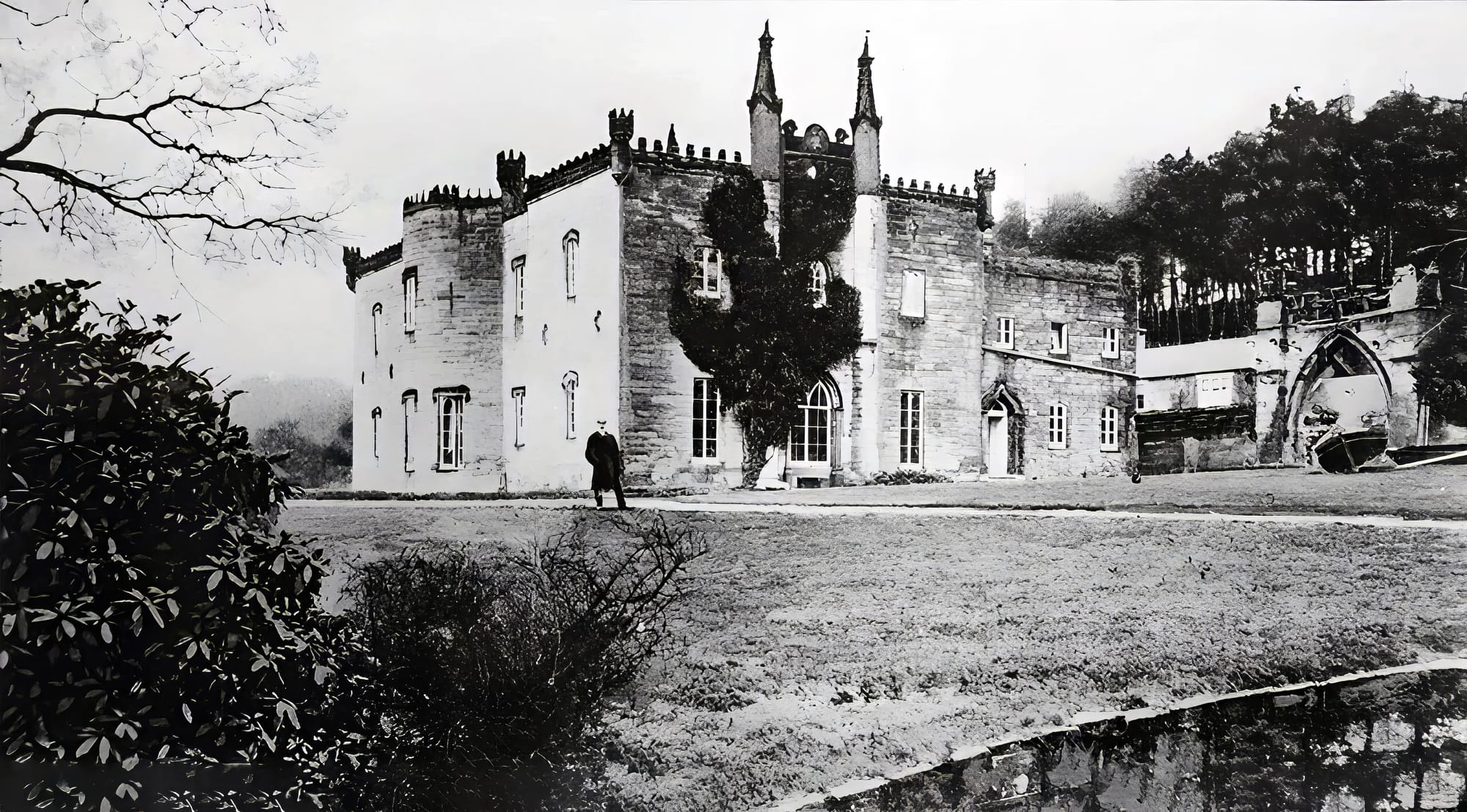
Early 19th Century: The Haworth Era
In 1811, Cliffe Park Hall was established in Staffordshire, England, as a significant architectural feat, representing the grandeur and tastes of the early 19th century. Commissioned by John Haworth, a member of a wealthy merchant family, the construction of the hall was a considerable investment, costing £25,000, a notable sum for the time and the equivalent of £1.6 million today.
The hall’s design is a remarkable blend of the romantic Gothic Castle style and Georgian architectural elements. This fusion creates a picturesque and dramatic aesthetic typical of the Gothic revival movement, which was popular among the affluent classes of early 19th-century Britain. The Gothic influence is evident in features such as pointed arches, ribbed vaults, and the inclusion of flying buttresses, giving it the majestic appearance of a medieval castle.
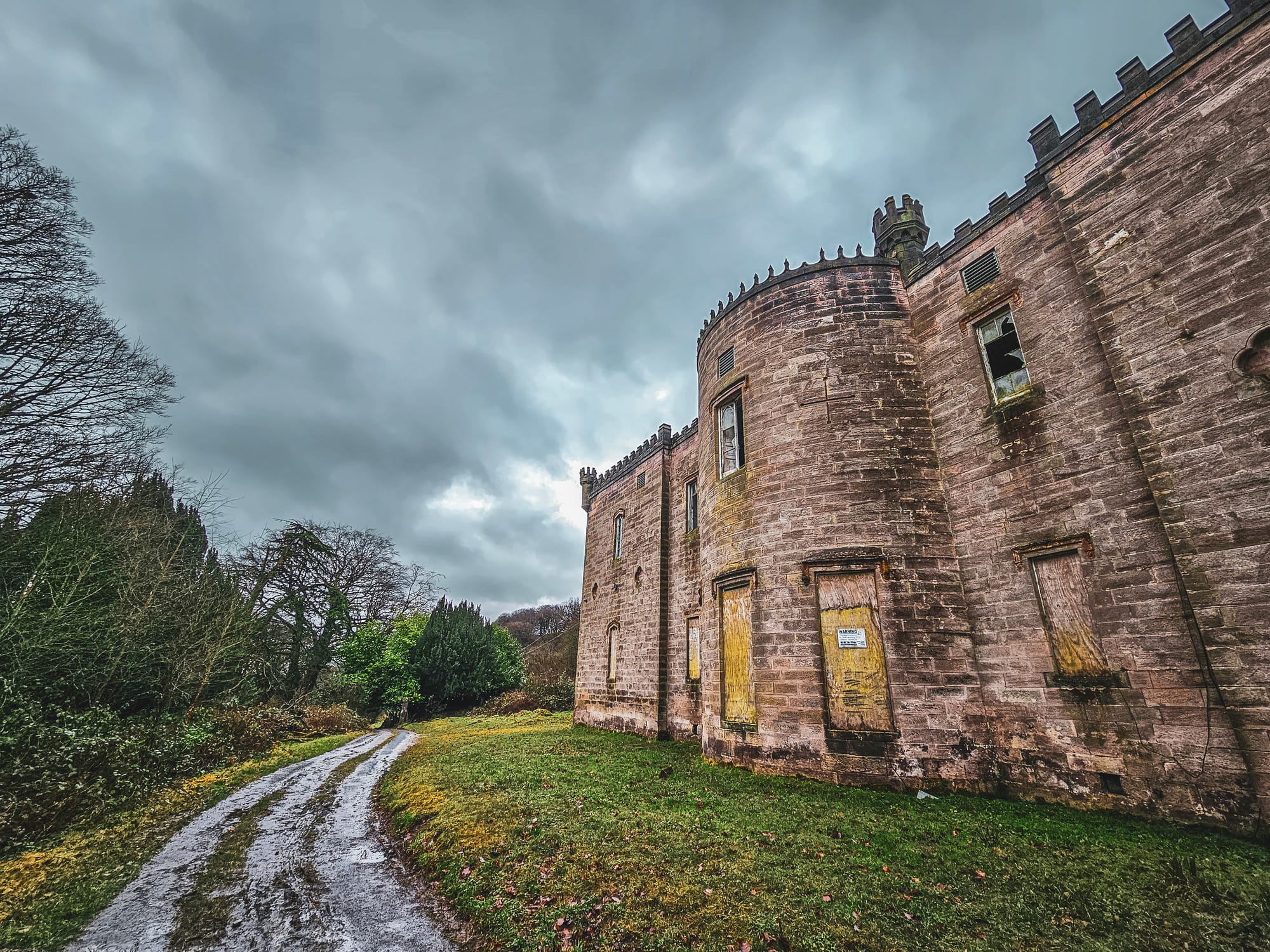
Adding to its unique character, the hall also showcases Georgian architectural traits, known for its classic lines, balance, and harmony. This style, prevalent during the reign of the British king named George, is characterized by symmetrical facades, sash windows, and panelled doors, contributing to the hall's elegant and orderly appearance.
A particularly ingenious architectural feature of Cliffe Park Hall is the clever disguise of its chimney stacks as turrets. This design choice not only enhances the hall's castle-like appearance but also demonstrates a creative approach to blending functionality with aesthetic appeal. By disguising the chimneys, the architects managed to maintain the Gothic fantasy of the building while adhering to practical necessities.
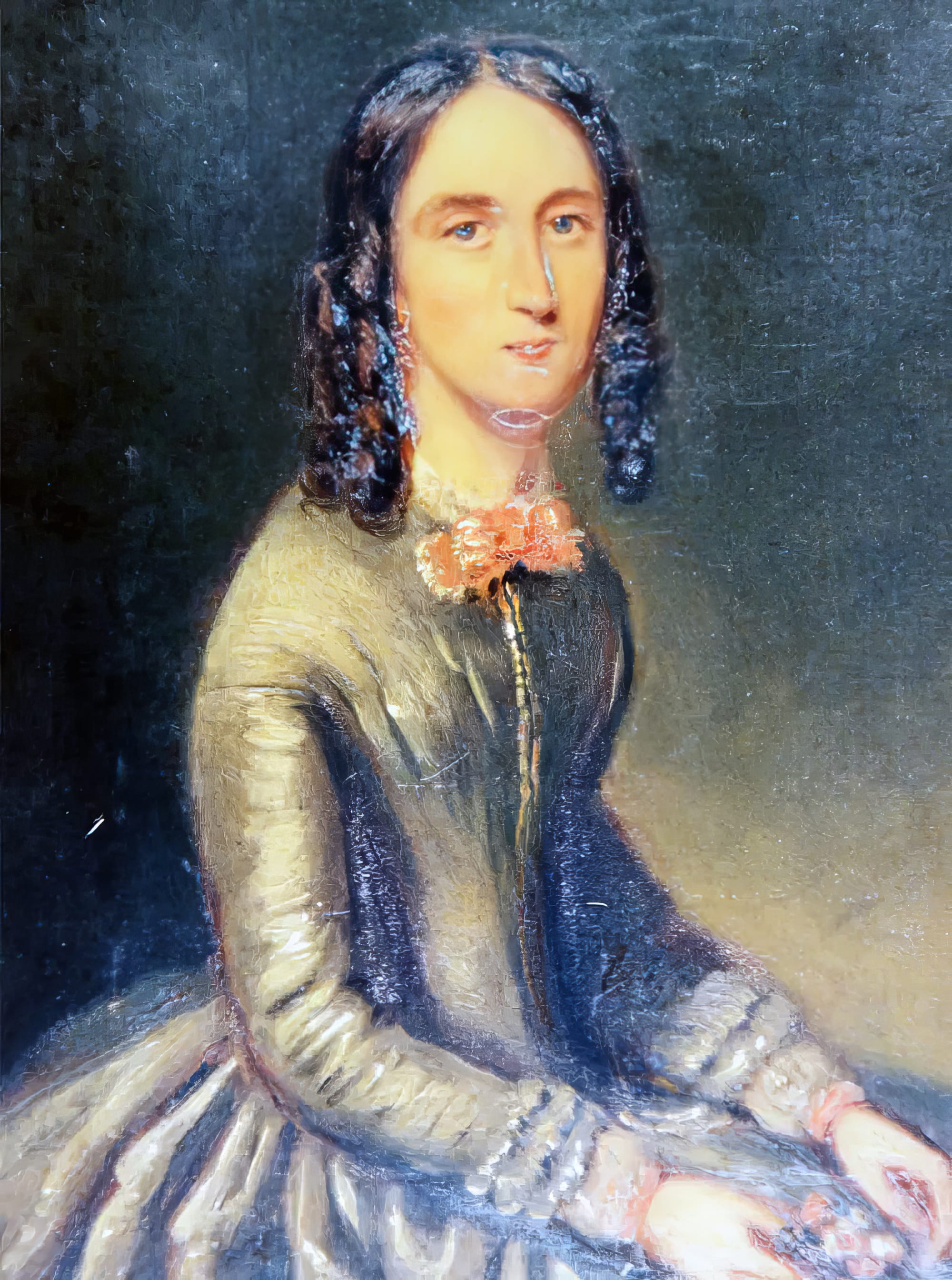
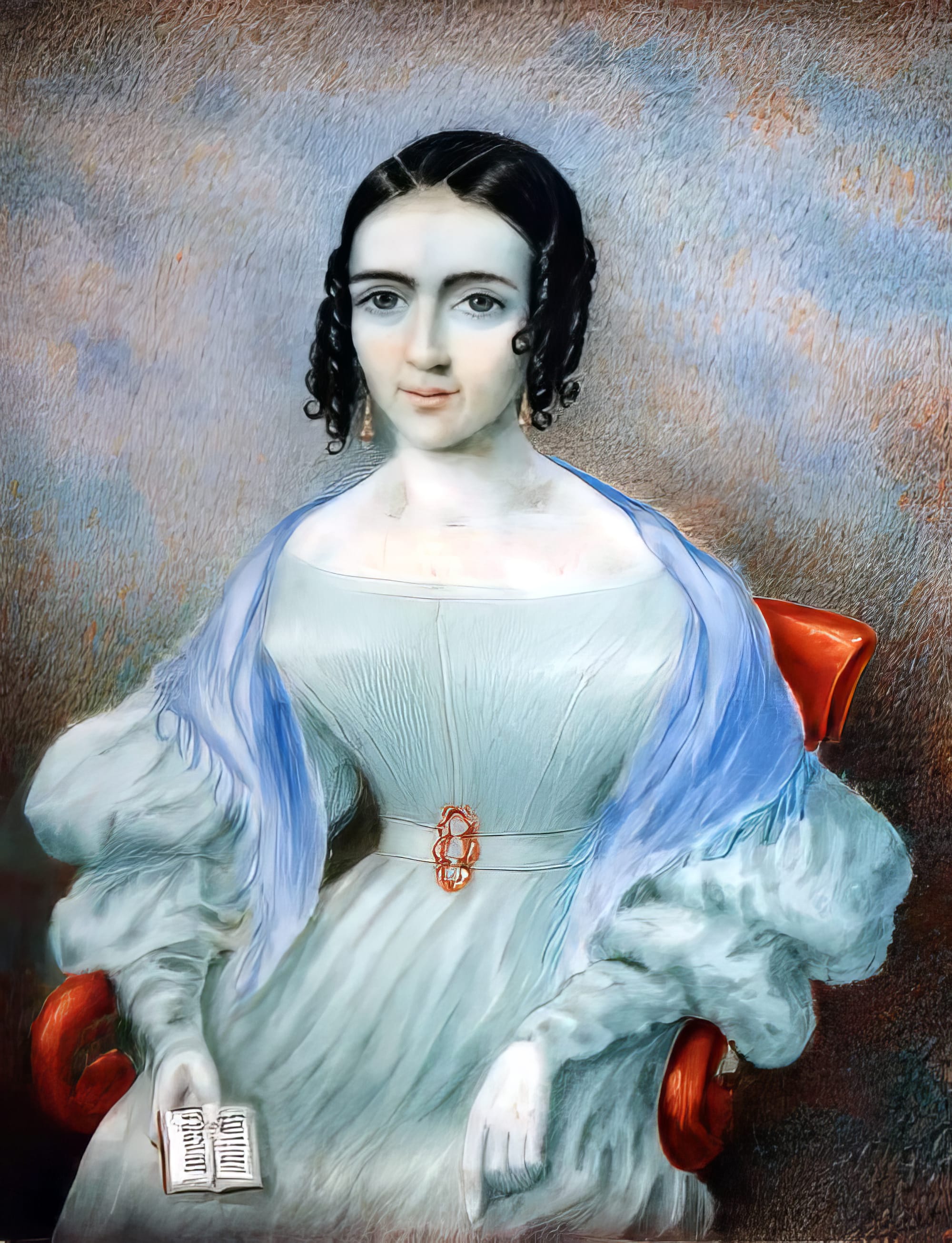
Fanny Bostock in 1835 and 1840
In 1831, upon the death of John Haworth, Cliffe Park Hall passed into the hands of Fanny Bostock, who was both his cousin and romantic partner. This transfer marked a notable change in the stewardship of the estate, with Fanny taking over its management.
Fanny Bostock, born in 1796, had a significant connection to both John Haworth and Cliffe Park Hall. Her inheritance of the estate was a testament to their close relationship, which was exceptional given the societal norms of the time. As the new owner, Fanny was responsible for maintaining the hall and its surrounding lands, including the nearby Rudyard Lake.
Her tenure at Cliffe Park Hall was characterized by a strong commitment to preserving the privacy and tranquillity of the estate, especially against the backdrop of the growing influence of the North Staffordshire Railway in the area. The estate's transition to Fanny's ownership after John Haworth's death marked a critical moment in its history, reflecting the personal connections and challenges of estate management in the early 19th century.
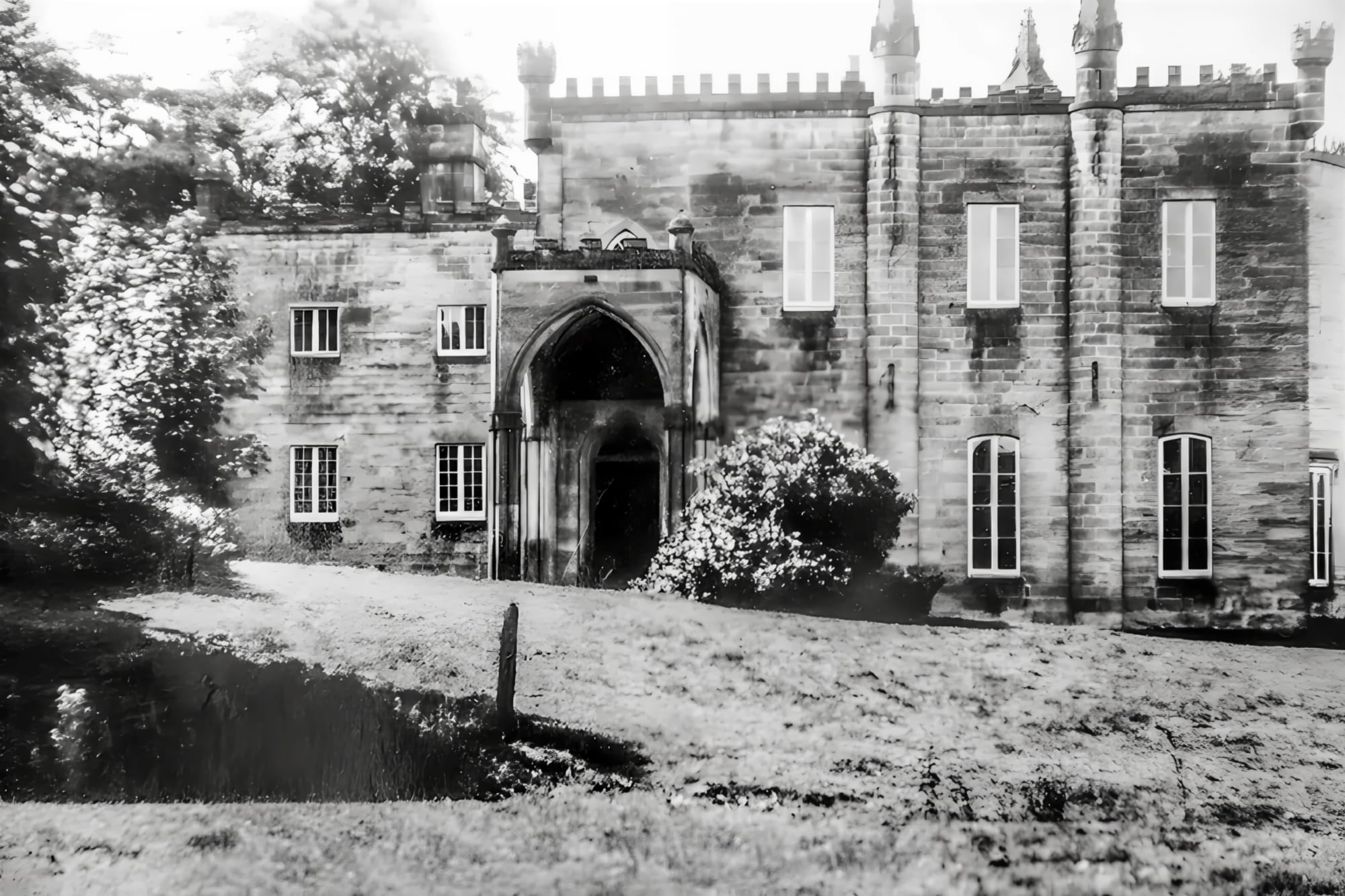
Mid-19th Century: The Bostock Influence
Between 1835 and 1849, Fanny Bostock, the owner of Cliffe Park Hall, was actively involved in efforts to maintain the tranquillity of Rudyard Lake, which played a significant role in the estate's appeal. During this period, she faced a major challenge with the growing influence of the North Staffordshire Railway (NSR), which threatened the serenity of the lake and its surroundings.
Fanny's dedication to preserving the lake's peaceful environment led her to engage in a prolonged legal battle against the NSR. The railway company had plans to popularize the lake as a tourist destination, which included increasing visitor access via rail. Fanny saw this move as a direct threat to the secluded and private nature of the lake, which had been a hallmark of the area for decades.
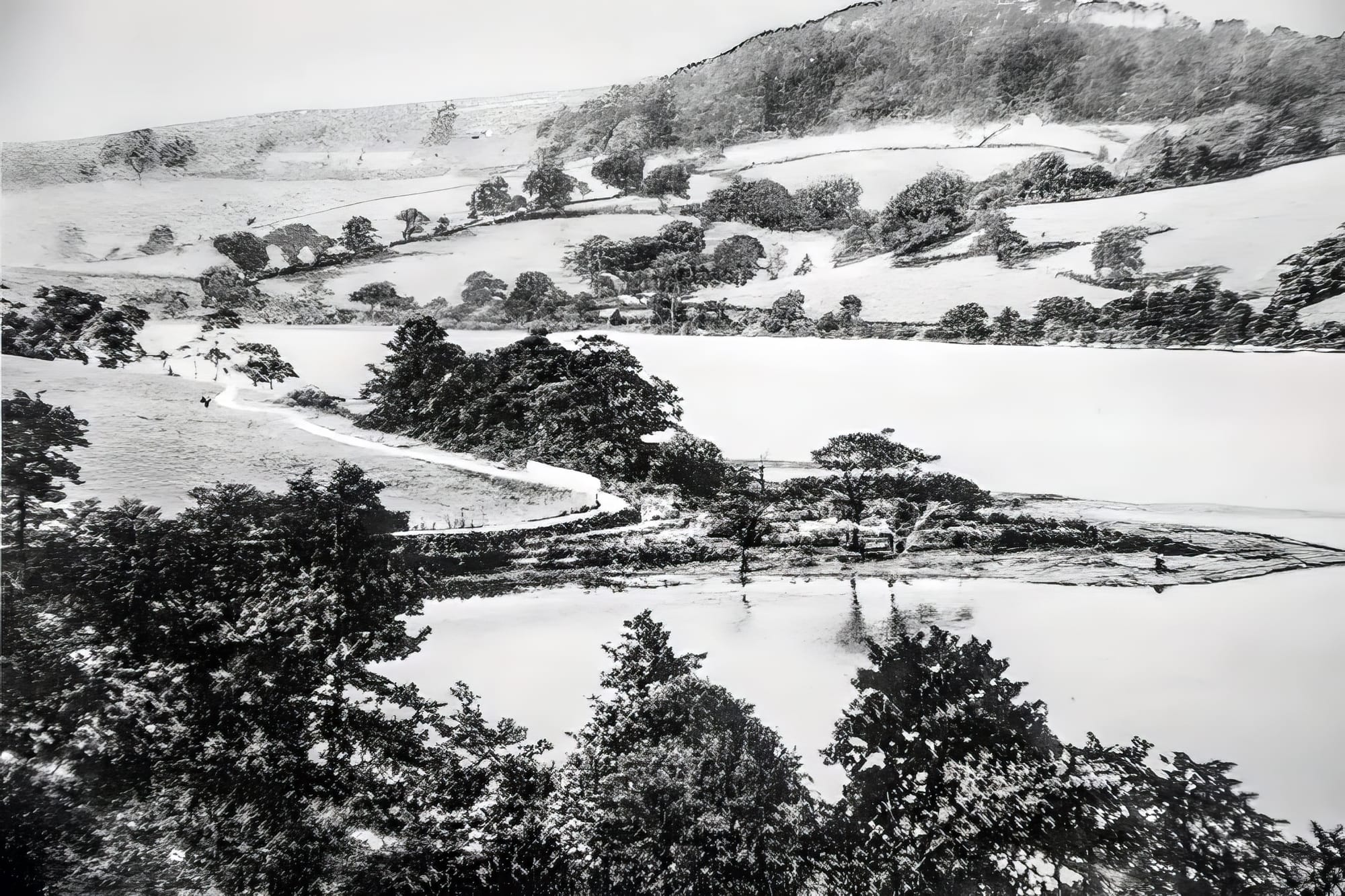
From 1851 to 1856, Fanny fought a determined and lengthy court action against the NSR. Her primary objective was to prevent the railway from commercializing the lake and to reduce the influx of visitors that the railway encouraged. This legal battle was not only about maintaining the aesthetic and environmental standards of the lake but also about preserving a way of life and the character of the estate.
Ultimately, Fanny's efforts were successful. She secured a permanent injunction that prevented the NSR from using the lake for commercial activities. This legal victory was significant, as it demonstrated her resilience and commitment to protecting the estate's interests. It also set a precedent for the management and preservation of private estates against the backdrop of industrial expansion in England during the 19th century.
Bostock ultimately achieved a significant victory. In 1856, the Court of Chancery granted her a permanent injunction that prevented the NSR from:
- Using the lake for any commercial purposes, including operating boats or offering tours.
- Building any structures on the lake or its banks.
- Promoting the lake as a tourist destination in their publications or advertisements.
Fanny Bostock's actions between 1835 and 1849 were instrumental in safeguarding the tranquillity of Rudyard Lake. Her successful legal battle against the NSR highlighted the challenges faced by estate owners during a time of rapid industrialization and societal change. Her dedication to preserving the lake's serene environment has become an important part of the history of Cliffe Park Hall and its surrounding areas.
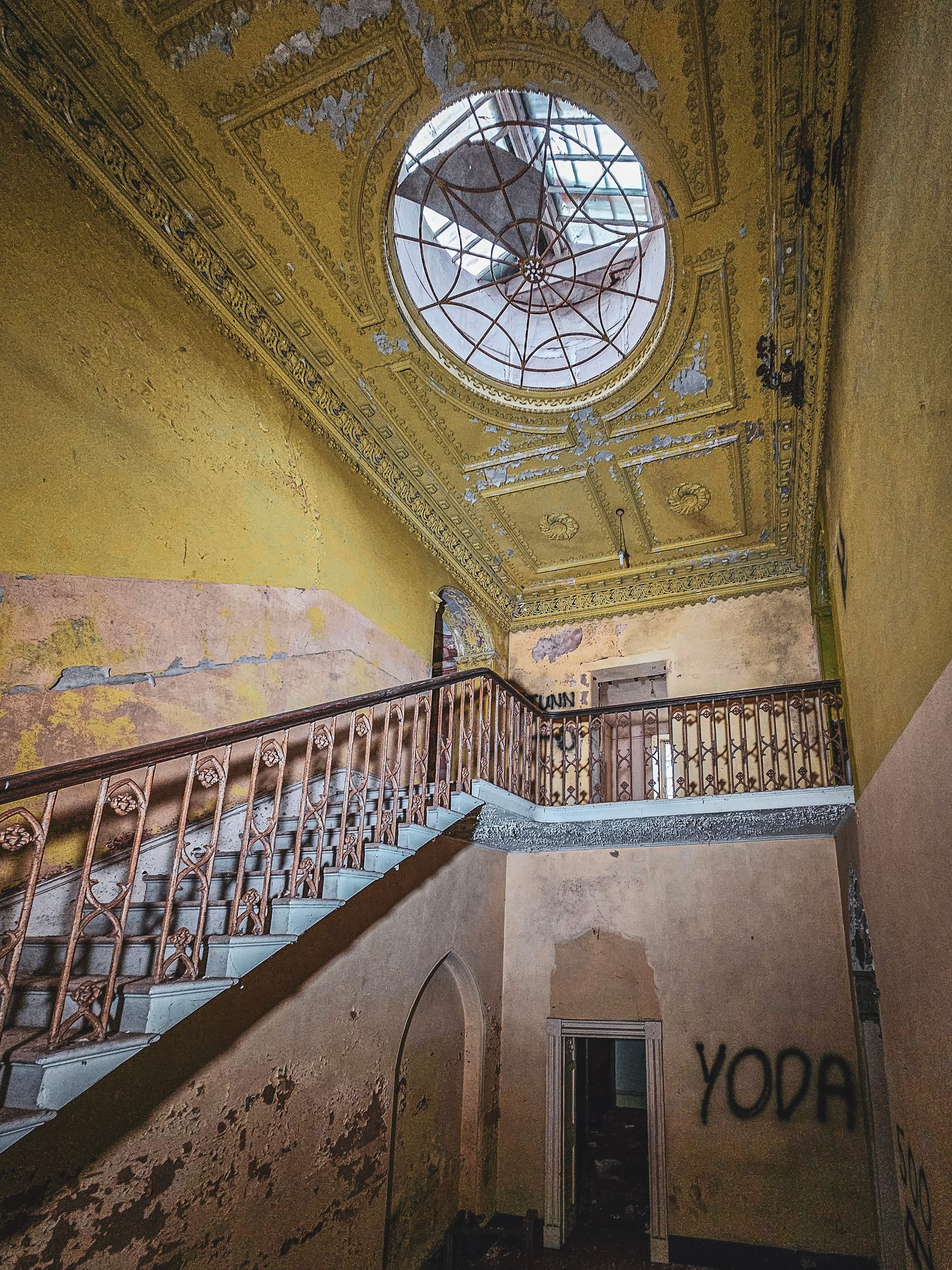
1849: The opening of the Churnet Valley Branch railway
In 1849, a significant development occurred near Cliffe Park Hall with the opening of the Churnet Valley Branch railway. This event marked a pivotal moment in the region's history, as it brought about a major shift in accessibility and connectivity to the area.
The Churnet Valley Branch was part of the broader expansion of the North Staffordshire Railway (NSR) network, which aimed to link various parts of Staffordshire and the surrounding regions. The opening of this railway branch had far-reaching implications, not just for Cliffe Park Hall and its immediate environment but also for the broader community.
One of the most immediate impacts of the railway's opening was the increased ease of travel and transportation. It enabled more people to visit the once-secluded areas around Cliffe Park Hall and Rudyard Lake, thereby changing the dynamics of the local area. This increased accessibility was both an opportunity and a challenge; while it fostered greater connectivity and potential economic development, it also threatened the tranquillity and privacy that had been characteristic of the area.
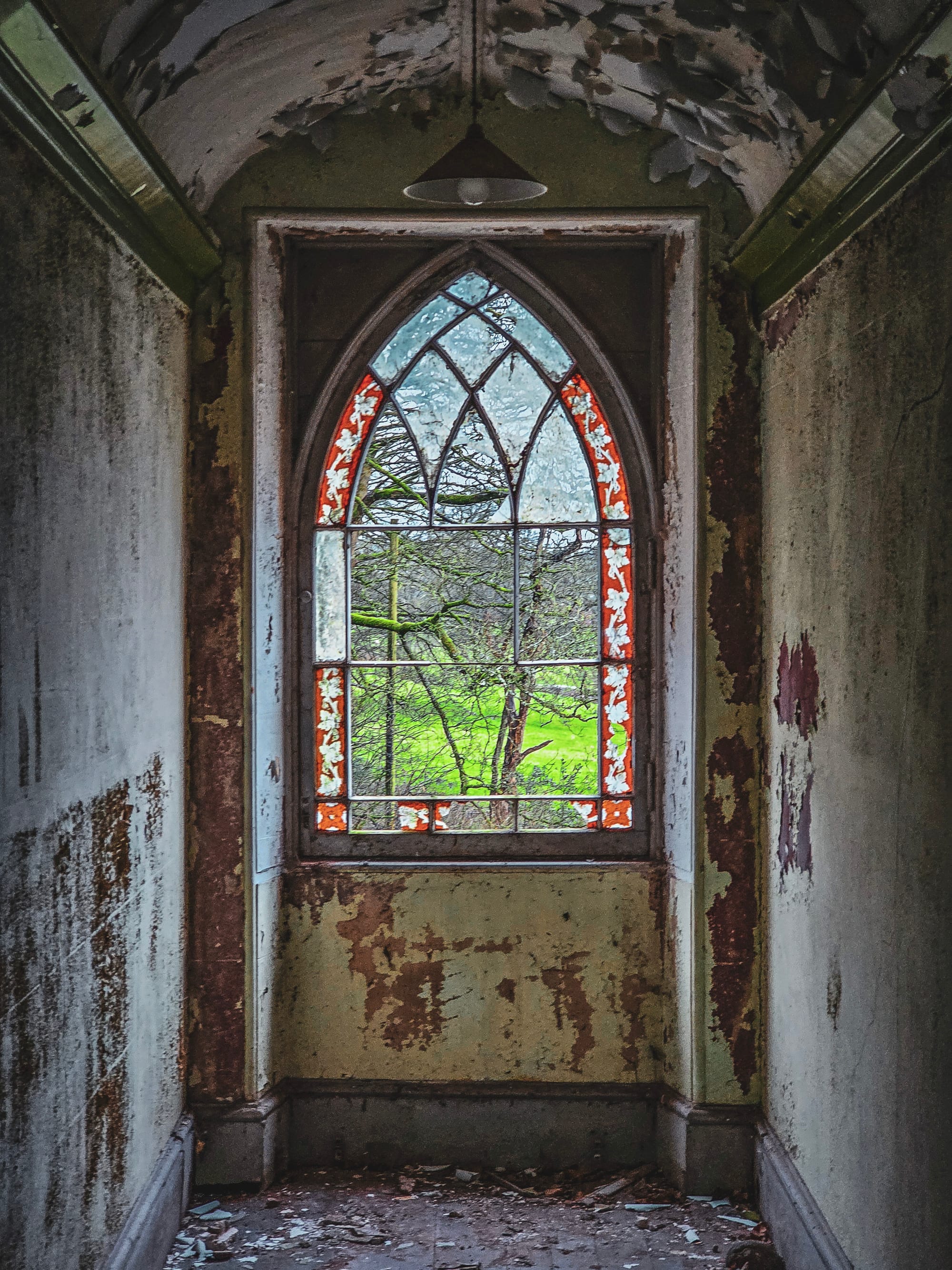
For Fanny Bostock, the owner of Cliffe Park Hall at the time, the opening of the Churnet Valley Branch was particularly significant. It directly influenced her prolonged legal battle with the NSR, as she sought to limit the railway's impact on the quiet and secluded nature of Rudyard Lake. Her concerns were primarily focused on the potential commercialization and increased visitor traffic that the railway could bring.
The establishment of the Churnet Valley Branch in 1849 thus represented a key moment in the history of Cliffe Park Hall and its surroundings. It symbolized the growing influence of industrialization and modernization in the region, presenting both challenges and opportunities for the local community and landowners like Fanny Bostock. This development was indicative of the broader changes occurring in 19th-century England, as the expansion of the railway network transformed landscapes and lifestyles.
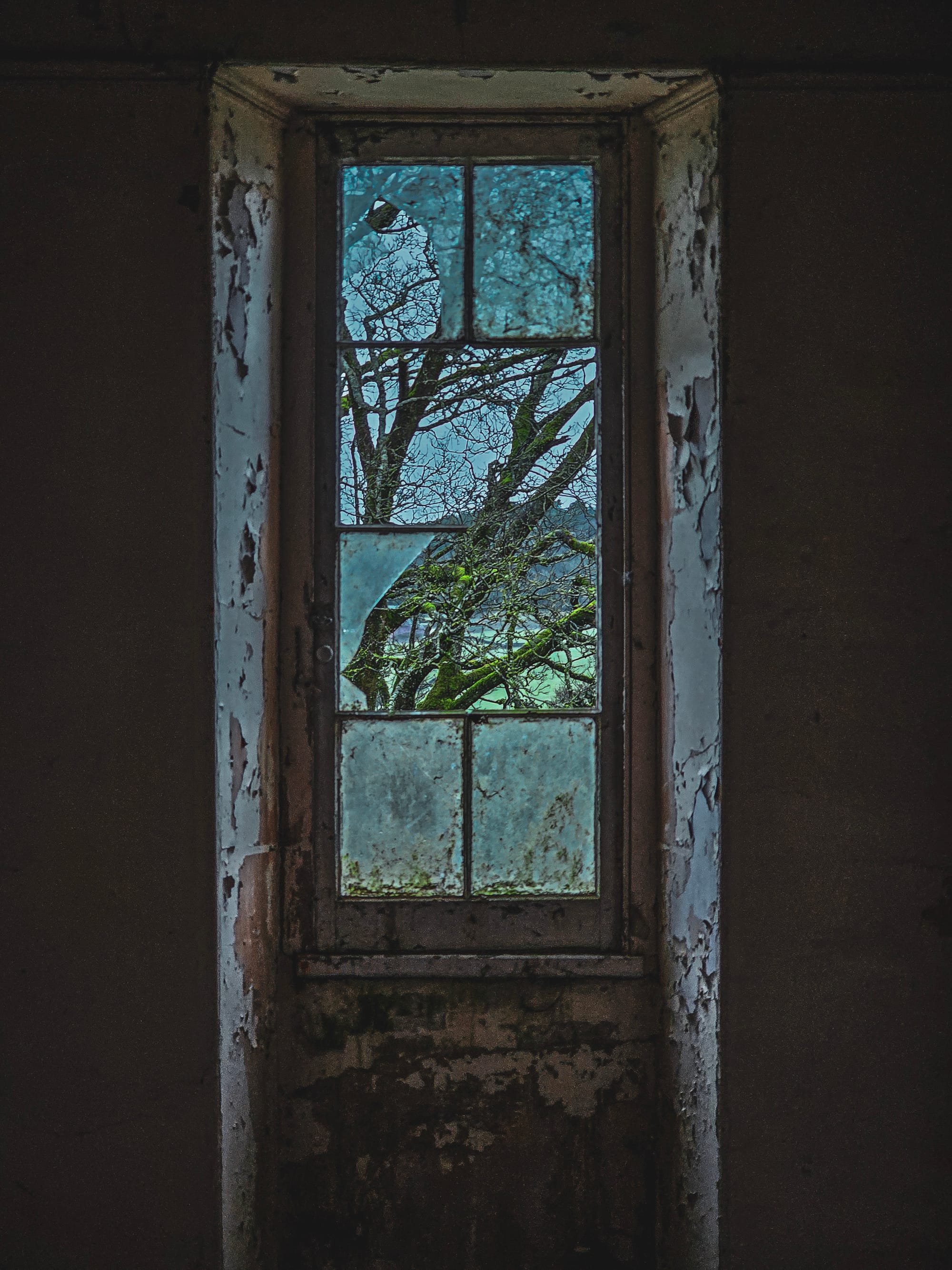
1875 - The division of the estate
In 1875, the history of Cliffe Park Hall experienced a significant turn with the death of Fanny Bostock. Having lived most of her life at the estate, Fanny's passing marked the end of an era. Notably, she left no heirs to inherit the property, which led to a substantial change in the ownership and structure of the Cliffe Park estate.
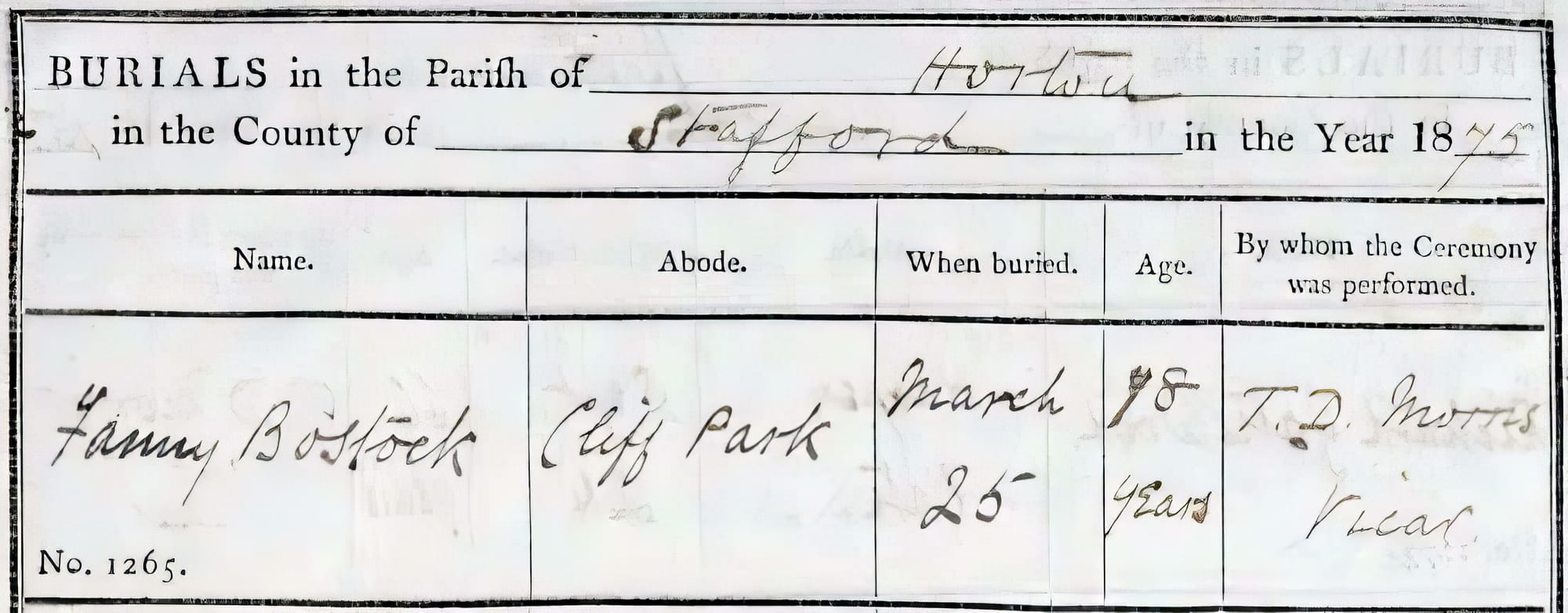
As Fanny died a spinster and without direct descendants, the estate did not have a clear line of succession. This absence of heirs necessitated the division of the Cliffe Park estate, a process that would shape its future significantly. The division of the estate involved the sale of various parts of the property, which were subsequently bought by different individuals and entities.
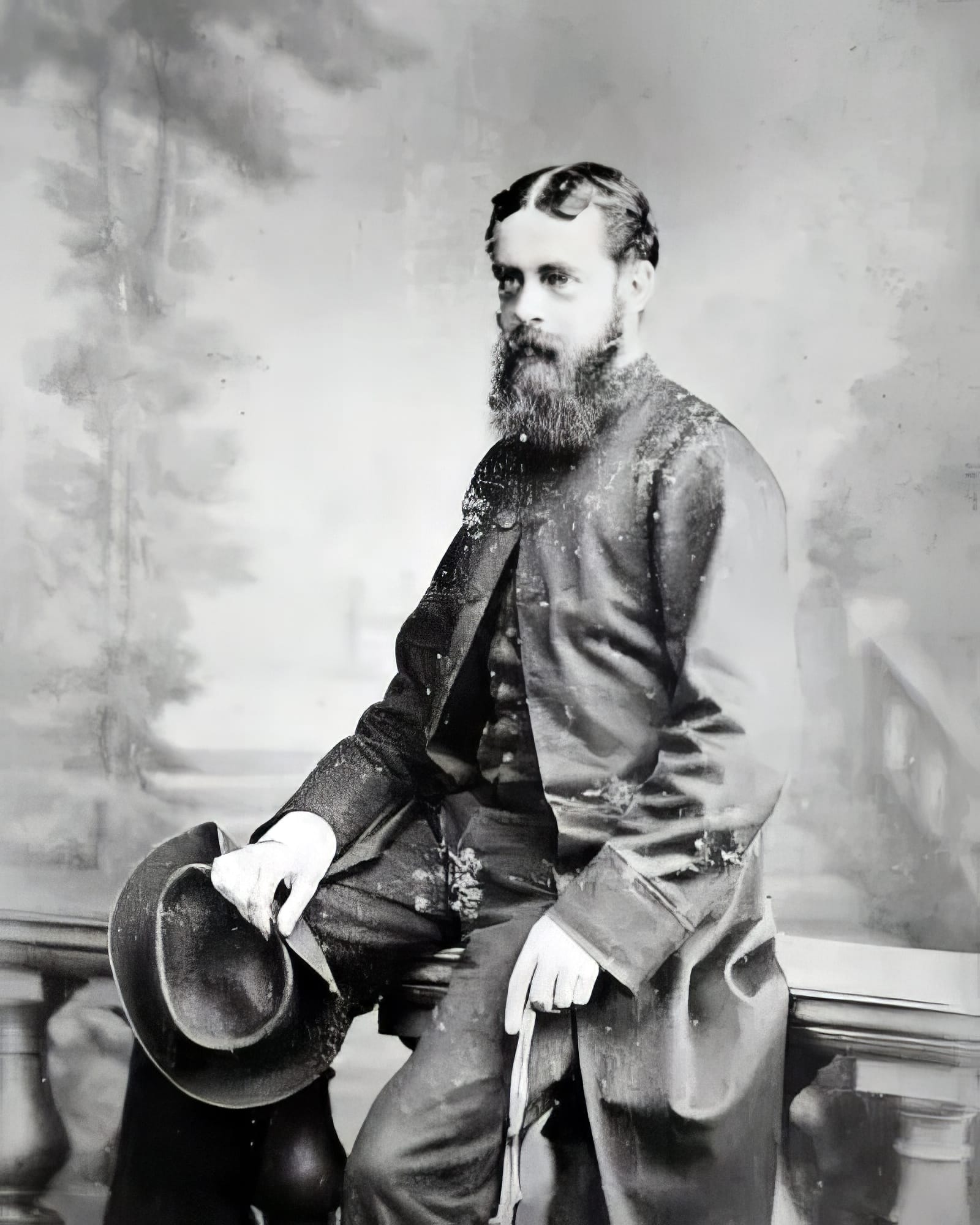
The Reverend Edward Boothman was a key figure in the post-Fanny era of Cliffe Park Hall. He was the husband of Fanny Bostock’s niece, making him a part of Fanny's extended family. Recognizing the value and potential of the property, Reverend Boothman purchased the hall and some of its land and buildings for £14,250, £1.3 million today. His acquisition was a significant investment and indicated the hall's continuing prestige and value.
The remaining land of the Cliffe Park estate was sold off in smaller plots. These sales contributed to the development of the land around the lake, shaping it into the landscape that is recognized today. This piecemeal sale of the estate land not only altered the ownership structure but also marked the beginning of a new phase in the area's development, with the land being used for various purposes by different owners.
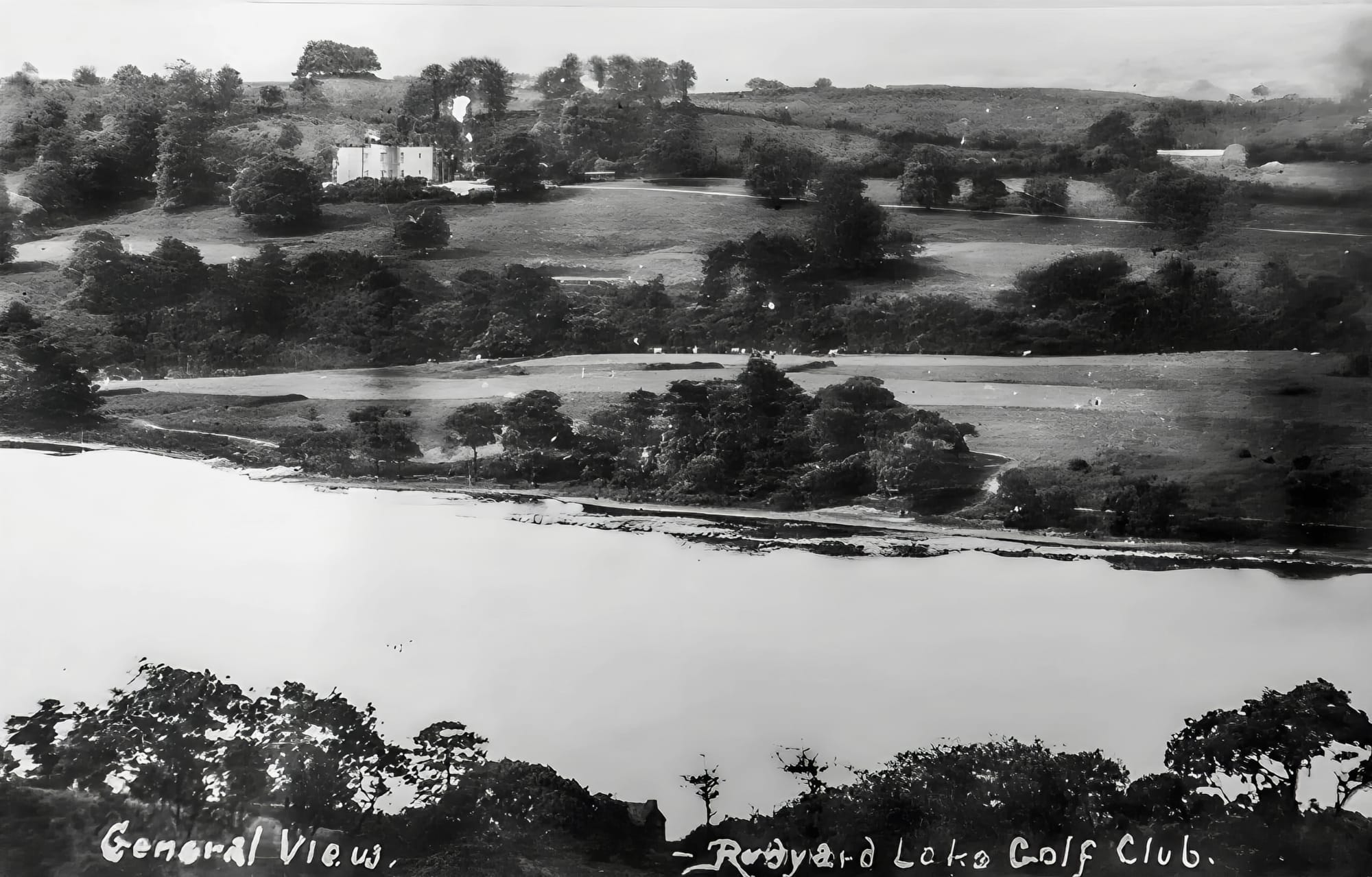
Turn of the Century: The Golf Club Era
The period from 1903 to 1926 at Cliffe Park Hall is notably marked as the Golf Club Era, a time when the estate underwent significant transformation and gained a new identity. This era began with the acquisition of the Cliffe Park estate by the North Staffordshire Railway (NSR) in 1903, reflecting a shift in the use and purpose of the estate.
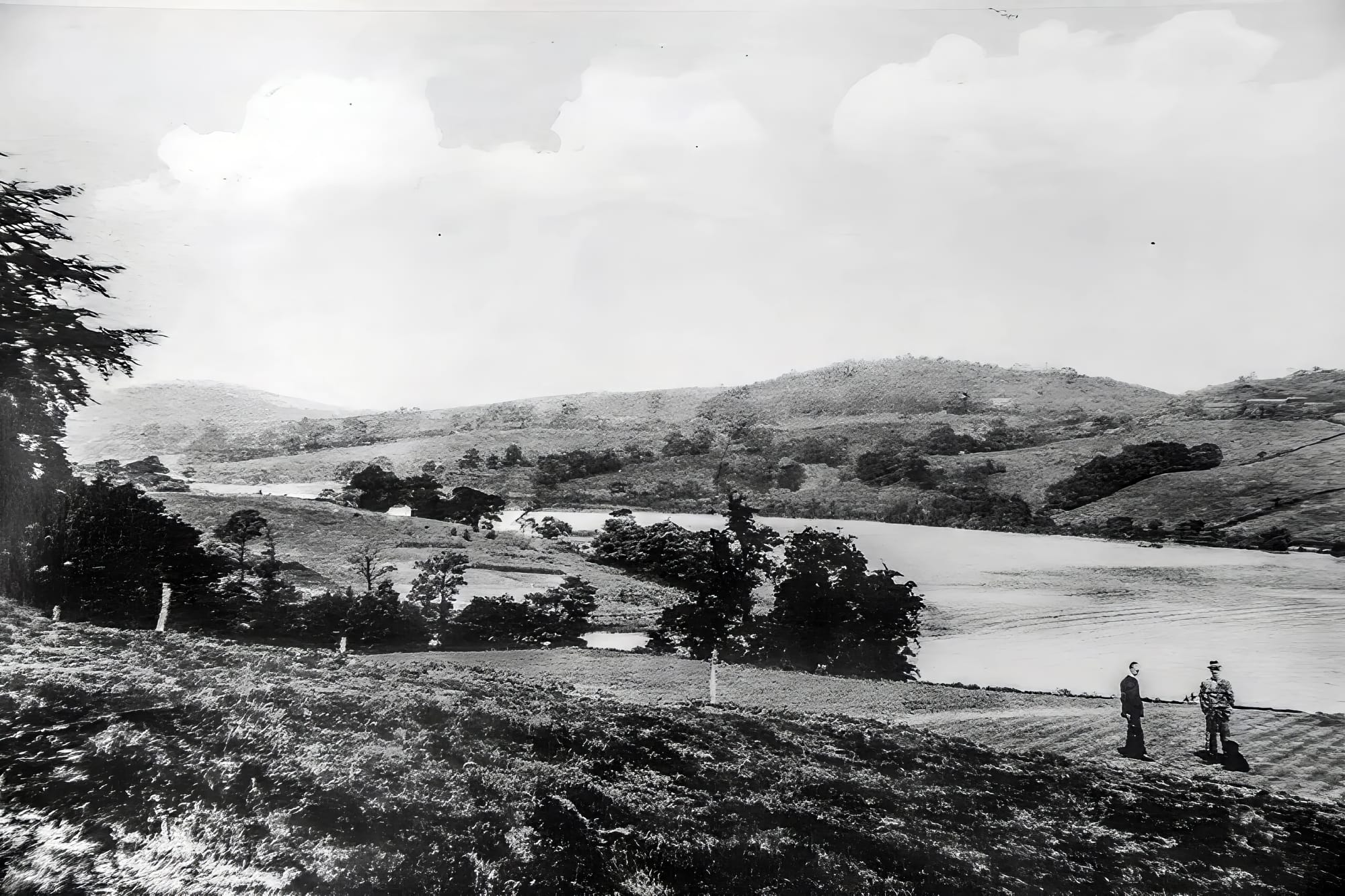
In 1903, the NSR purchased the estate with the specific intention of developing a golf course on the land between the hall and Rudyard Lake. This was a strategic move to enhance the recreational appeal of the area, especially for visitors arriving by train. The railway company's involvement in the estate's development marked a distinct departure from its previous private residential status.
The following year, in 1904, the NSR secured an act of parliament that allowed commercial activities on the lake, overturning the earlier Bostock Act of 1856. This legislative change was crucial as it enabled the NSR to rent out motor launches and rowing boats on the lake, further increasing the area's attractiveness as a leisure destination.
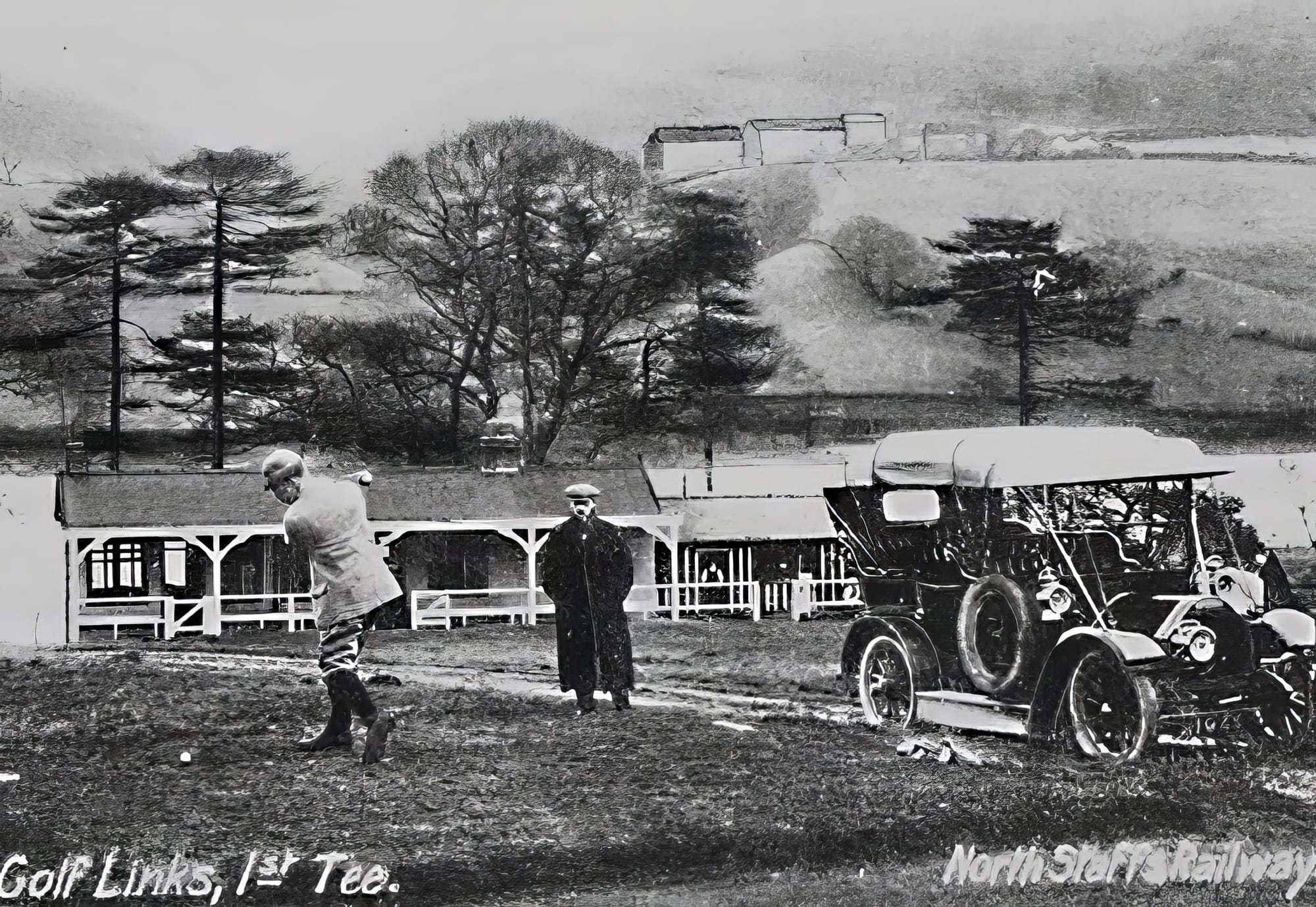
By 1905, the golf course layout was completed, and Rudyard Lake Golf Club was officially formed in 1906, becoming the first golf club in North Staffordshire. This development was significant, as it introduced a new recreational dimension to the estate. The golf course, initially established as a nine-hole course following the formation of the club in 1906, was expanded to an eighteen-hole course. This expansion was a response to the growing popularity of golf as a sport and the club's desire to offer a more comprehensive golfing experience.
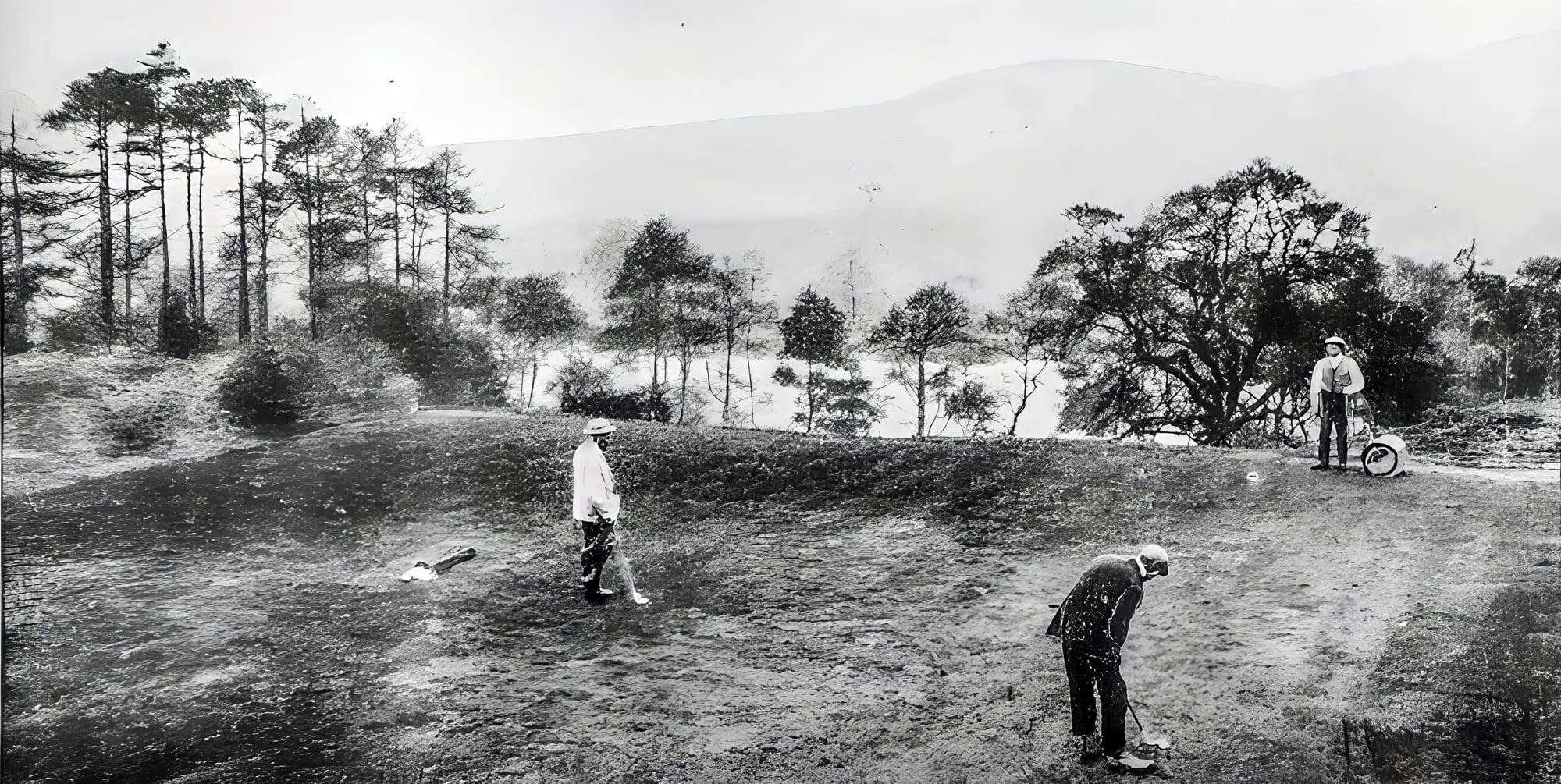
The NSR had plans to demolish Cliffe Park Hall to build a new clubhouse. However, due to financial constraints, this plan was not realized. Instead, the hall itself was repurposed as the golf club's clubhouse, with only changing rooms and locker rooms being added to the existing building. This adaptation of the hall was a practical solution that preserved its historical structure while serving the new recreational purpose.
The golf club era was also marked by the construction of a new railway station, 'Rudyard Lake Station,' later renamed 'Cliffe Park Halt,' at the north end of the lake to serve the golf course. This station facilitated access for golfers and visitors, further integrating the estate into the region's burgeoning leisure and tourism industry.
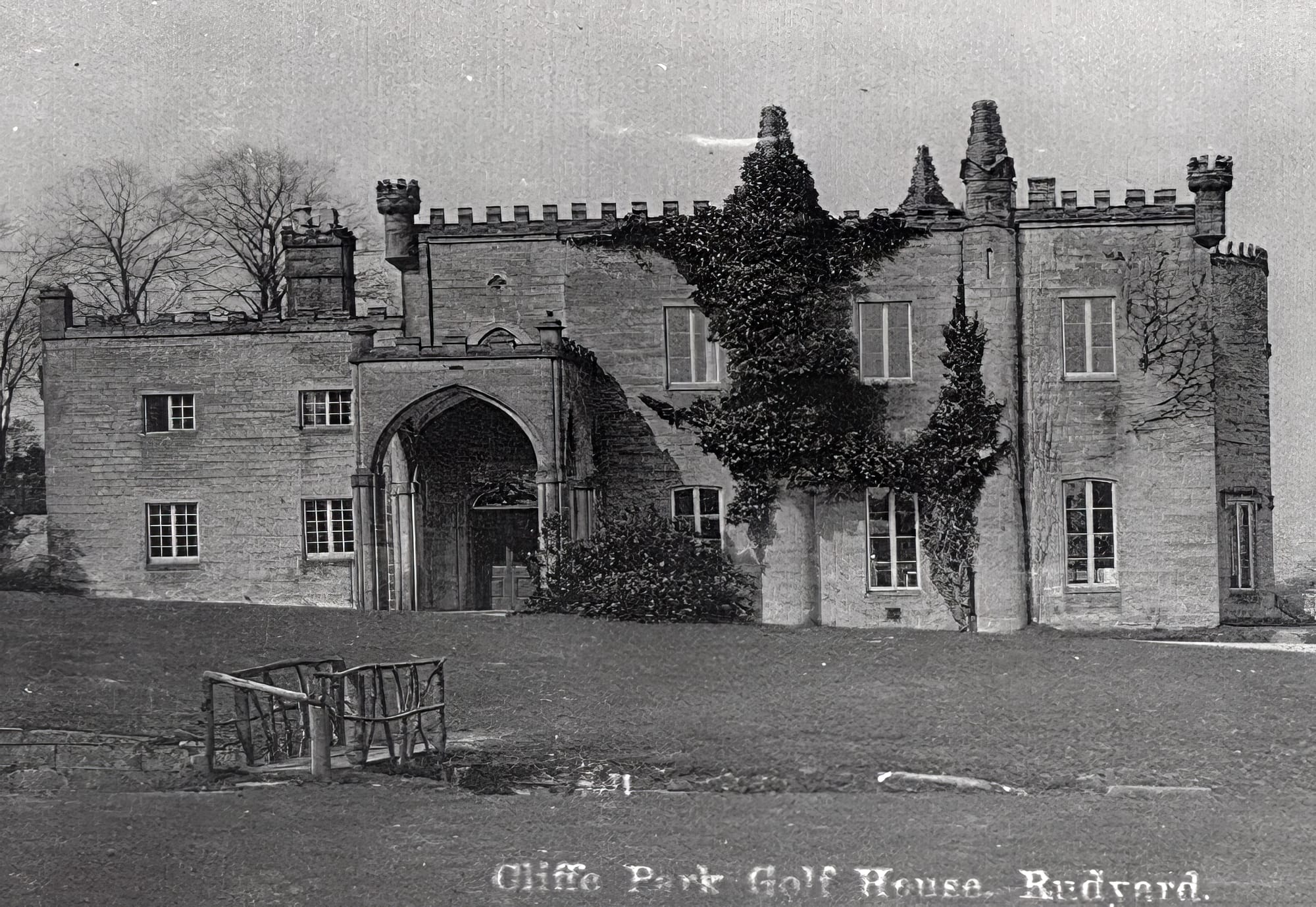
However, by the early 1920s, golf and other recreational activities at Rudyard became increasingly popular, leading to a transformation of Cliffe Park Hall into a residential clubhouse. Despite these developments, the golf club faced challenges. The increasing availability of more accessible golf courses nearer to towns and cities, combined with post-war economic conditions and reduced train services, led to a decline in its popularity.
Eventually, in 1926, the golf course closed, marking the end of the Golf Club Era at Cliffe Park Hall. This closure was primarily attributed to the increasing popularity of more accessible golf courses in the surrounding areas. The club, which had been a prominent feature of the estate since its establishment in 1906 and subsequent expansion to an eighteen-hole course in 1908, faced dwindling patronage, leading to its eventual shutdown.
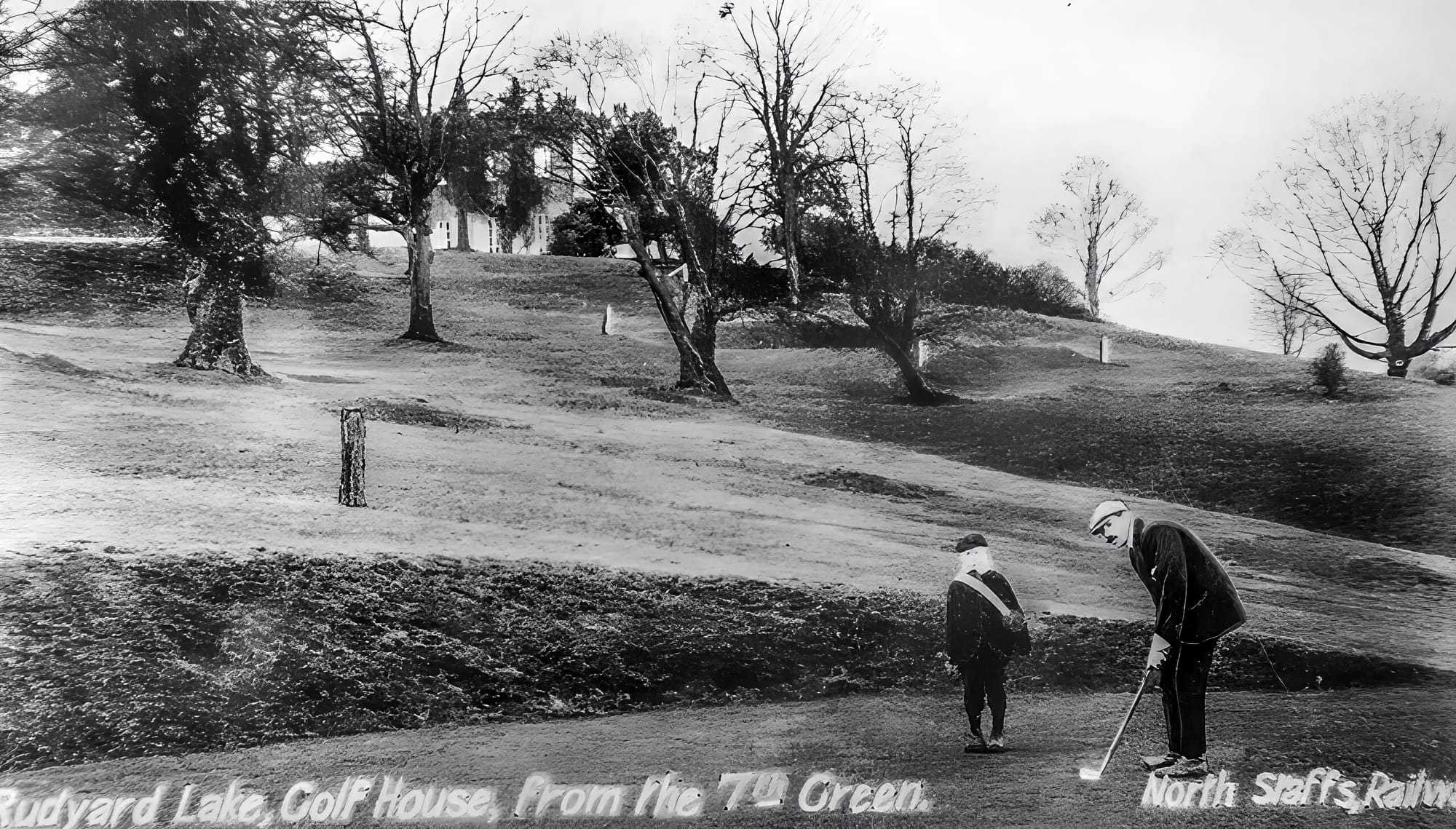
The early 20th century saw a surge in the popularity of golf, resulting in the establishment of numerous golf courses across the country. Many of these new courses were located closer to towns and cities, making them more accessible to a larger number of people. These golf courses often had better transport links and were easier for golf enthusiasts to reach, especially for those who did not have the luxury of travelling long distances to play.
The Rudyard Lake Golf Club, despite its picturesque setting and the appeal of playing on a course associated with the historic Cliffe Park Hall, could not compete with the convenience offered by these more centrally located courses. Accessibility became a crucial factor for golfers, and as a result, clubs situated nearer to urban centres gained popularity at the expense of more remotely located ones like Rudyard Lake.
Another contributing factor to the club's closure was the changing social and economic landscape after World War I. The post-war period saw alterations in leisure patterns and transportation. Reduced train services, which had previously been a key means of accessing the club, particularly impacted its visitor numbers. The general economic conditions of the time might also have influenced the club's fortunes, as recreational activities such as golf could become less of a priority for people during tougher economic times.
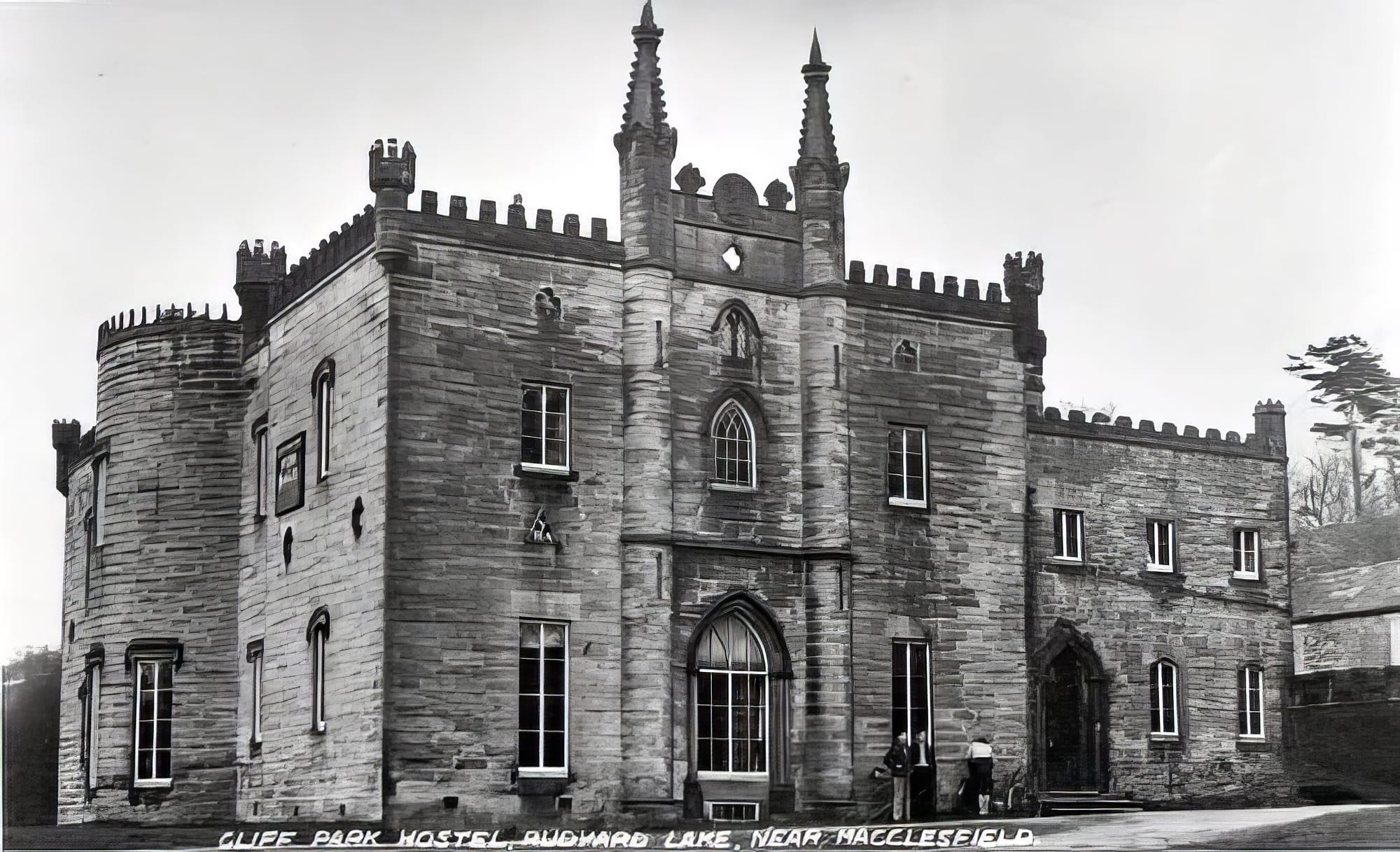
Mid-20th Century: The Hostel Years
From 1933 to 1969, Cliffe Park Hall experienced a notable transformation, serving as a youth hostel and becoming a popular venue for young travellers and adventurers. This period represented a significant shift in the hall's history, transitioning from its previous roles as a private residence and a golf club to a more communal and public use.
The transition began in 1933, when the then-current owners of Cliffe Park Hall, the London Midland and Scottish Railway (LMSR), which had succeeded the North Staffordshire Railway (NSR), decided to lease the hall to the Youth Hostels Association (YHA). The YHA, an organization dedicated to providing affordable accommodation for young people, saw the potential in Cliffe Park Hall as an ideal location for one of its hostels.
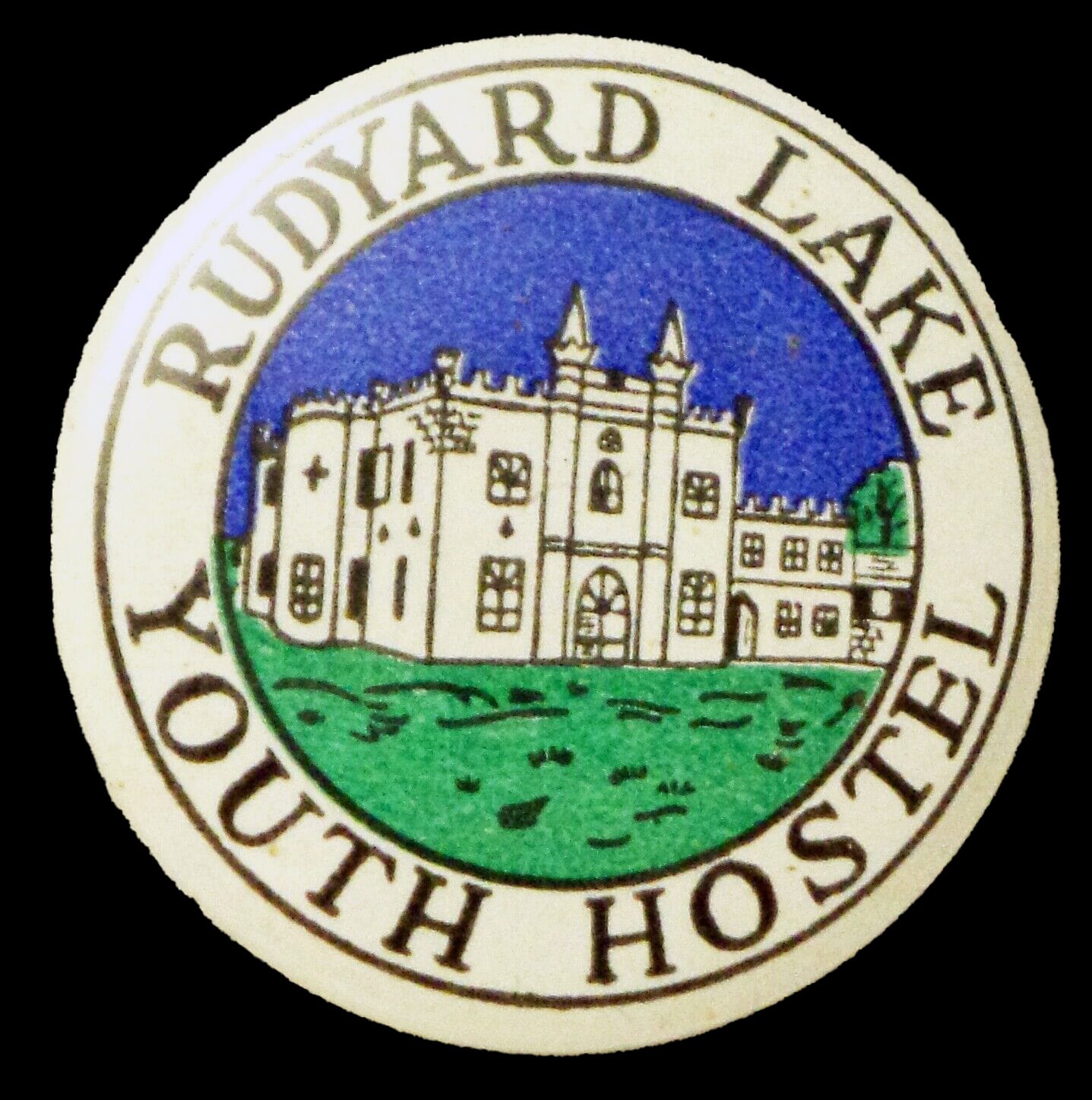
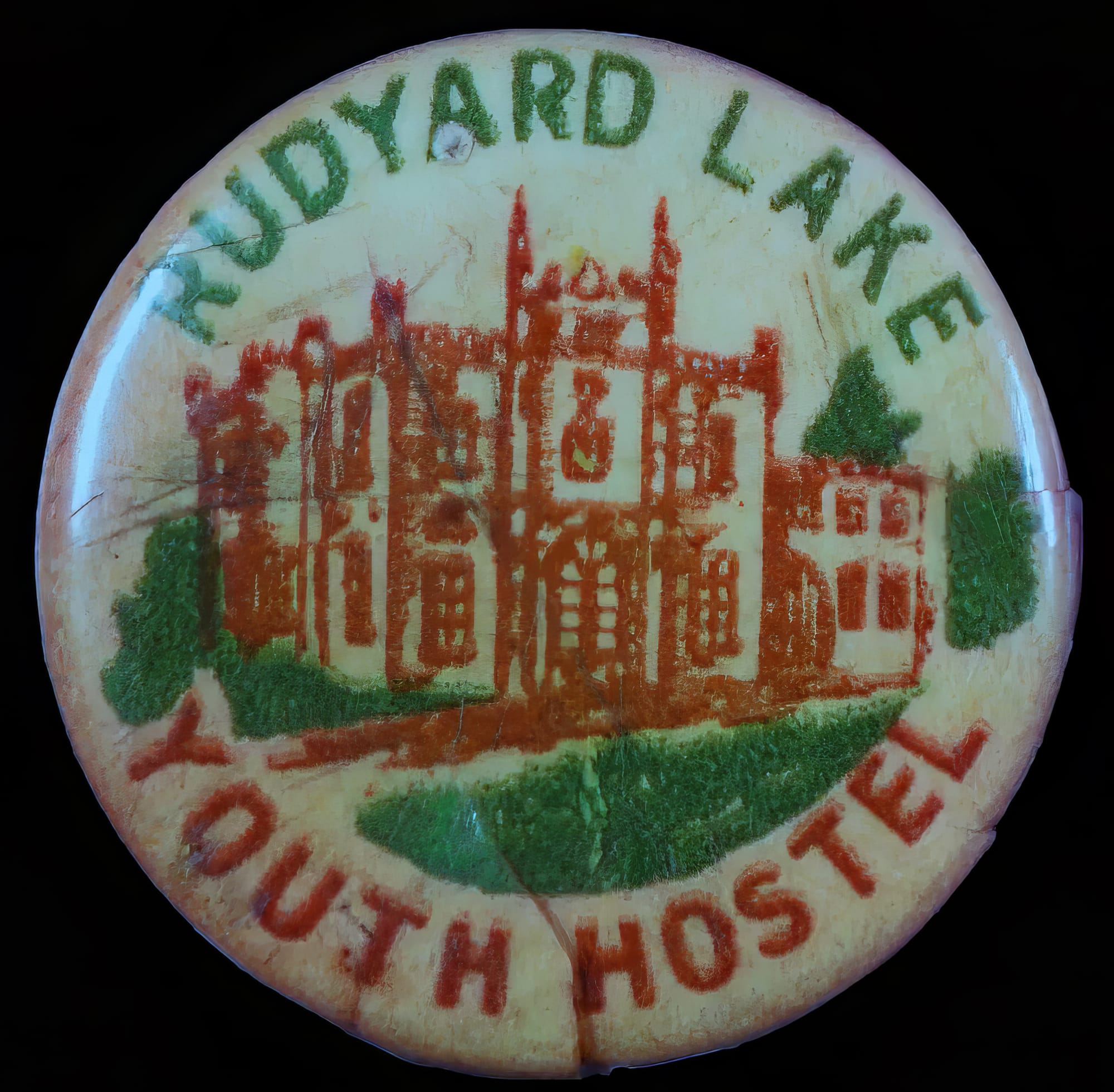
Rudyard Lake Youth Hostel Badges showing Cliffe Park Hall
The conversion process involved adapting the hall to meet the requirements of a youth hostel. This included creating dormitory-style sleeping arrangements, communal living spaces, and necessary facilities to accommodate the needs of young travellers. The aim was to provide a budget-friendly, safe, and sociable environment where young people could stay while exploring the natural beauty of the Staffordshire countryside and engaging in outdoor activities.
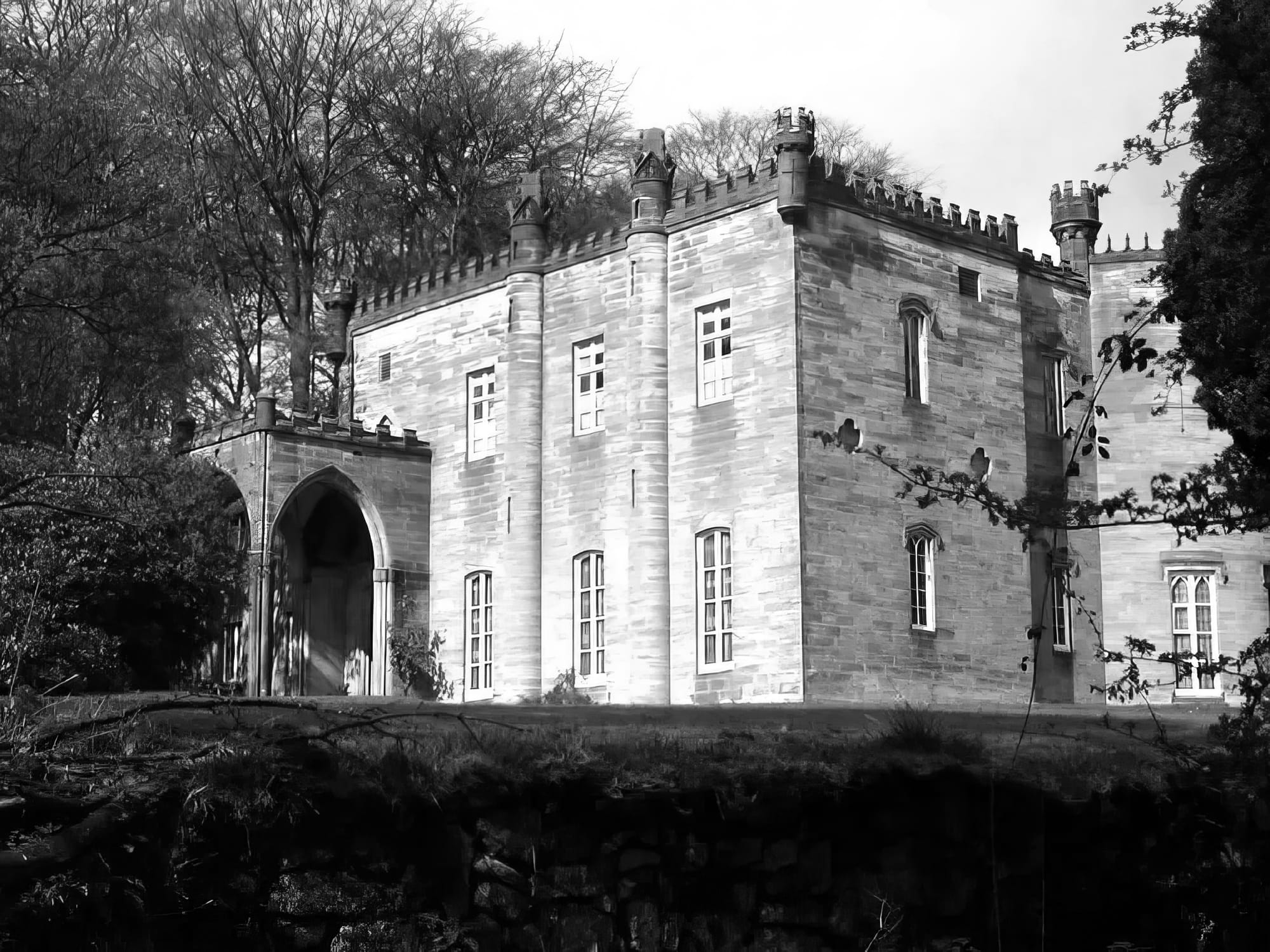
The opening of the Rudyard Lake Hostel was significant, as it was one of the more popular venues in the YHA network. Its picturesque setting near Rudyard Lake and the historical charm of Cliffe Park Hall made it an attractive destination for youth hostellers, both from within the United Kingdom and internationally. The hostel provided a budget-friendly option for young travellers seeking to explore the Staffordshire countryside and its natural beauty.

George Orwell visits Staffordshire
George Orwell's stay at Cliffe Park Hall in 1936 is a significant historical detail that adds depth to the narrative of this architectural landmark. Orwell, a renowned English writer, journalist, and critic, known for his acute awareness of social injustice, was on a mission to explore and document the life of the working class in the industrial heartlands of Northern England. This exploration was commissioned by his publisher, Victor Gollancz, and would later culminate in the book "The Road to Wigan Pier."
During his time at Cliffe Park Hall, Orwell immersed himself in the local environment, an experience that provided him with firsthand insights into the hardships faced by coal miners and their families in these regions. The contrast between the grandeur of Cliffe Park Hall and the harsh realities of the working-class life that Orwell was exploring must have been striking. This juxtaposition likely contributed to the vivid, empathetic, and sometimes stark portrayals found in his book.
"The Road to Wigan Pier" is divided into two parts: the first details his observations of the living and working conditions of the industrial workers in towns like Wigan, while the second part is more autobiographical, discussing Orwell's middle-class upbringing and the development of his political conscience. His stay at Cliffe Park Hall thus played a pivotal role in shaping both the observational and reflective aspects of his work.
This period in Orwell's life was crucial for his development as a writer and thinker. His experiences in the industrial North, including his stay at Cliffe Park Hall, deepened his understanding of social inequality and economic hardship, themes that would later permeate his more famous works such as "Animal Farm" and "1984."
Therefore, Cliffe Park Hall's connection to George Orwell is not just a footnote in its history, but a significant link to a momentous period in British literary and social history. It marks the hall not only as a site of architectural interest but also as a quiet witness to the gathering thoughts of one of the 20th century's most influential writers.
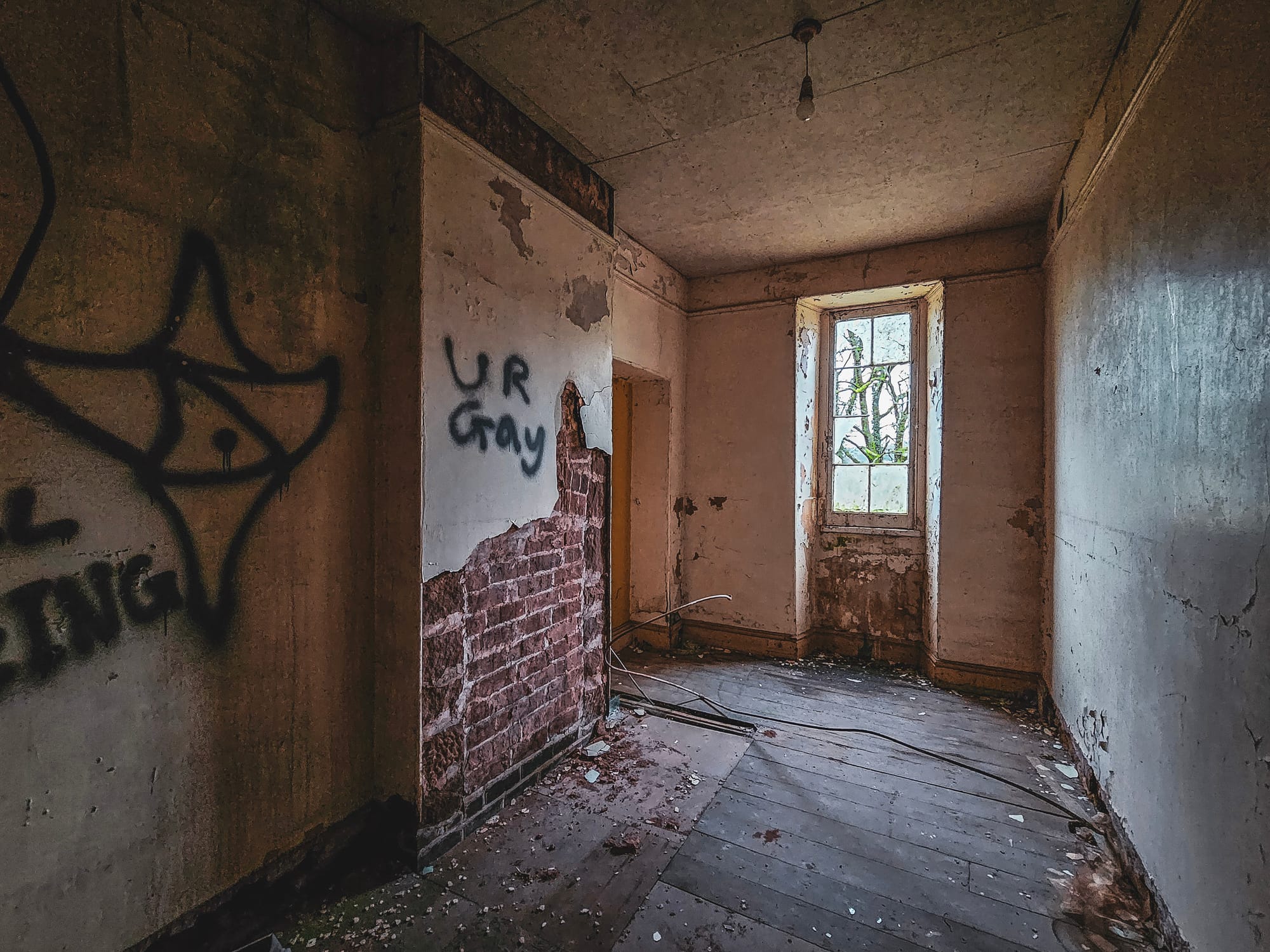
Decline and reinvention
However, by the end of World War II, the hostel was in dire need of renovation. The owners at the time, British Rail (the successor to LMSR), were unwilling to undertake these renovations without a substantial rent increase. Consequently, the YHA began negotiations to take over the property, which they successfully did in September 1955.
The renovation work started promptly after the acquisition. These renovations were comprehensive, involving both structural repairs and updates to the facilities to improve the comfort and experience of the guests. The aim was to modernize the hostel while preserving the historical integrity and charm of Cliffe Park Hall.
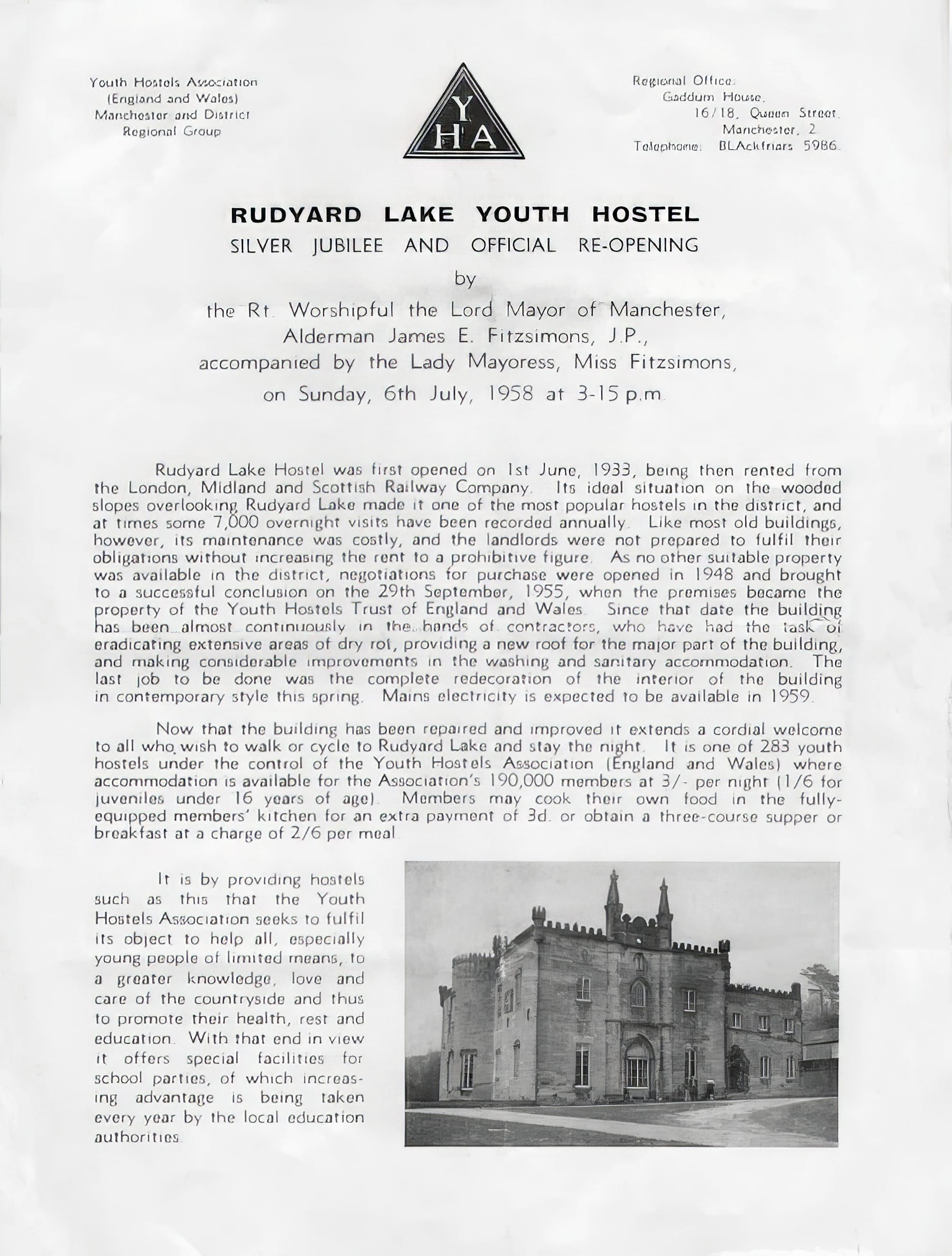
The efforts culminated in the grand reopening of the hostel on July 6, 1958. This event was not just a simple reopening; it coincided with the hostel's silver jubilee, celebrating 25 years since its initial opening in 1933. The reopening was a festive occasion, marked by the presence of dignitaries including the Lord Mayor of Manchester. It symbolized a new beginning for Rudyard Lake Hostel, revitalizing it as a destination for youth travel and ensuring its continued use and preservation.
Cliffe Park Hall continued to operate as a youth hostel until 1969, during which time it served as a hub for young people to explore and enjoy the surrounding countryside. In 1969, the YHA decided to sell the property due to declining usage and changing circumstances. This decision marked the end of Cliffe Park Hall's era as a youth hostel, a period in which it had played a significant role in the local community and the lives of numerous young travellers.
Despite the renovations and the re-opening celebration in 1958, by the late 1960s, the hostel faced declining usage. Factors such as changing travel trends, the availability of more accommodation options, and perhaps shifts in the preferences of young travellers contributed to a decrease in the hostel's popularity. Additionally, the maintenance and operational costs associated with running a historic building like Cliffe Park Hall might have influenced the YHA's decision.
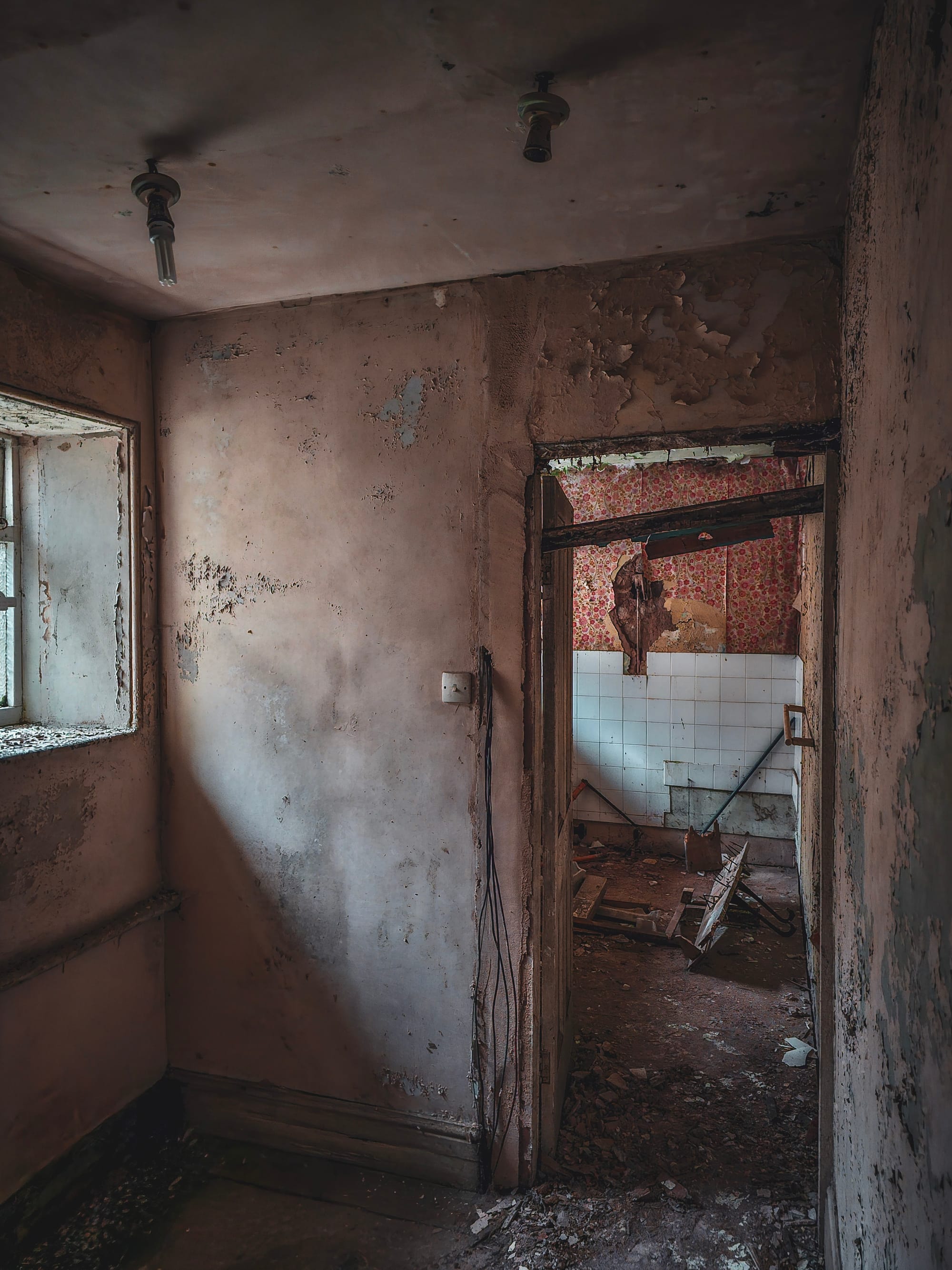
In the wake of the closure, the property was put up for sale. Brian Dalley, a private individual, purchased Cliffe Park Hall. This sale signified a return to private ownership for the first time since the early 20th century. Brian Dalley's acquisition of the property marked a new chapter in the hall's history, shifting its use from a bustling youth hostel to a private dwelling.
Under Brian Dalley's ownership, Cliffe Park Hall would have likely changed to adapt from a hostel to a private home. These changes could have included alterations to the interior to make it more suitable for private living while possibly maintaining some of the building's historic features and character.
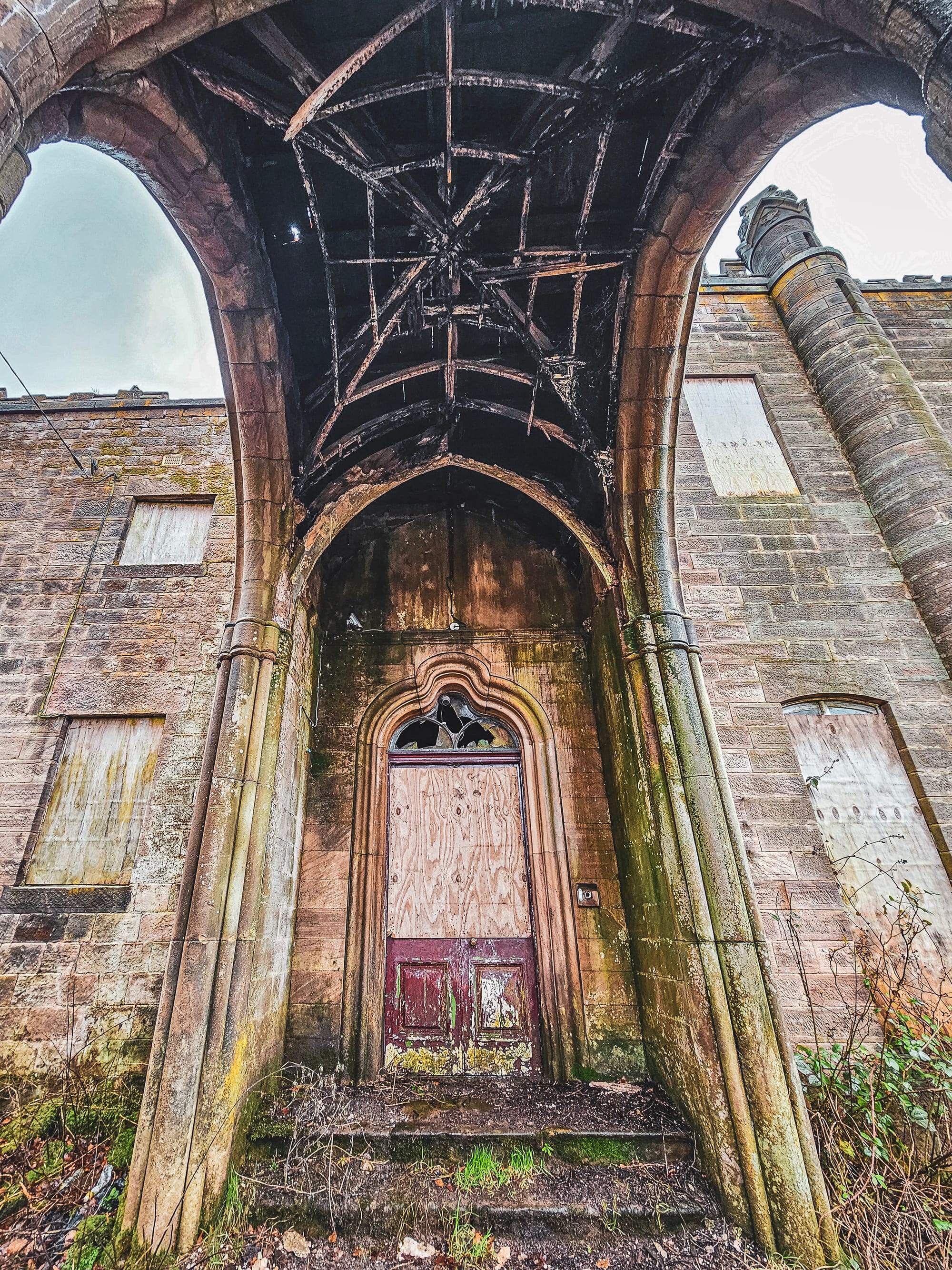
Late 20th to the 21st Century
Throughout the next few years, Cliffe Park Hall remained a prominent feature in the landscape, retaining its historical significance and architectural charm. However, it largely receded from the public eye, shifting from a hub of youth activity to a more secluded and personal space.
In 2013, Cliffe Park Hall, then under the ownership of Brian Dalley, experienced a significant and distressing event: a severe burglary. This incident was not just a property crime but also a personal violation, as it occurred while the hall was still a private residence.
The burglary at Cliffe Park Hall was particularly notable due to its severity. The intruders subjected Mr. Dalley to a harrowing experience; he was physically restrained and threatened during the ordeal. Reports indicate that Mr Dalley was tied to a medieval chair and subjected to several hours of ordeal, during which he was beaten. This level of violence and the duration of the crime were deeply traumatic.
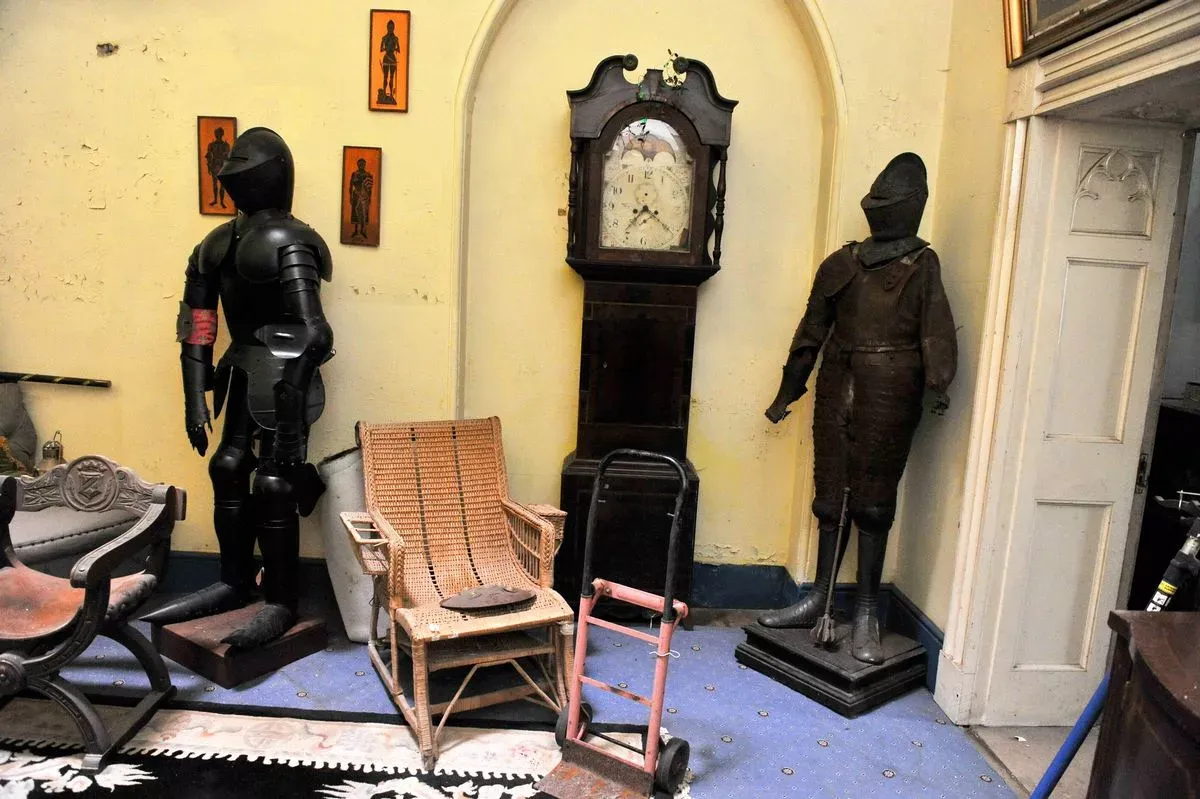
The burglars targeted the hall for its valuable contents, indicating that they were aware of the historical and monetary worth of the items within. Among the stolen items were numerous antiques and historically significant artefacts. This included a gold ceremonial sword studded with opals, which had once belonged to former Iraqi president Saddam Hussein. Additionally, the thieves made off with a 17th-century suit of armour, a Cromwellian spear, and a centuries-old 14-foot elephant gun, further emphasizing the hall's rich collection. Other reported missing items included a chain mail vest, paintings of Oliver Cromwell and William Shakespeare, and several swords, one of which was gold and ruby plated.
The 2013 burglary was a significant event in the history of Cliffe Park Hall, not only because of the loss of valuable and historical items but also due to the personal impact on Brian Dalley. The incident highlighted the vulnerabilities of residing in such a historically significant property, where the presence of valuable artefacts can attract criminal elements. This event became a part of the hall's more recent history, adding a sombre chapter to its long and varied narrative.
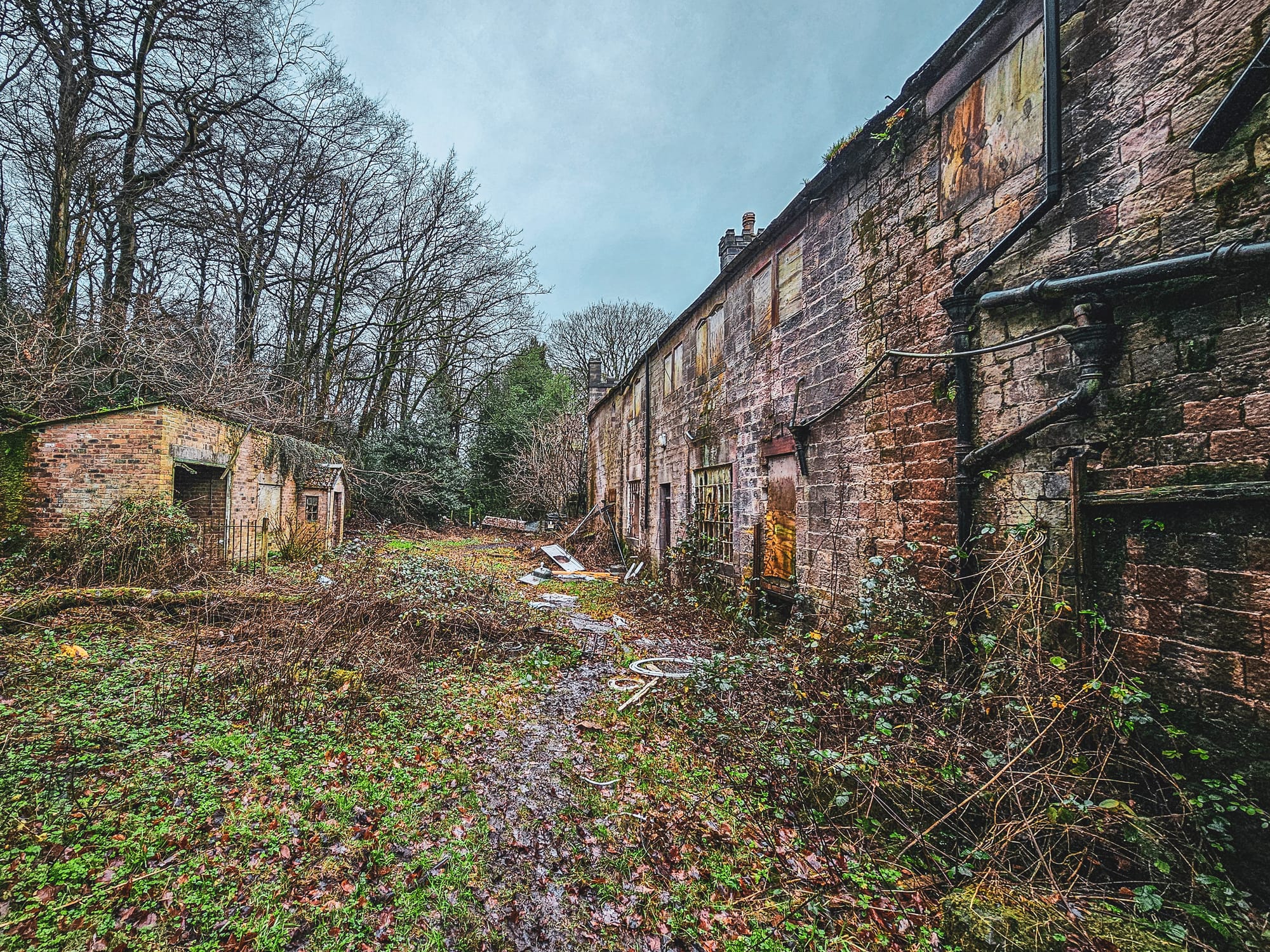
Brian Dalley’s death in 2015 marked the end of an era for Cliffe Park Hall. During his ownership, the hall had remained a private and relatively secluded property. Dalley’s stewardship over the years ensured that the hall was preserved as a significant historical structure, despite the challenges and vulnerabilities that came with maintaining such a property, as evidenced by the severe burglary in 2013.
Following his death, Cliffe Park Hall was put up for sale. This decision opened a new chapter for the hall, as it awaited a new owner and possibly a new role or purpose. The sale signified a potential shift in the future of the hall, bringing into question how its rich history and architectural value would be preserved and utilized by future owners.
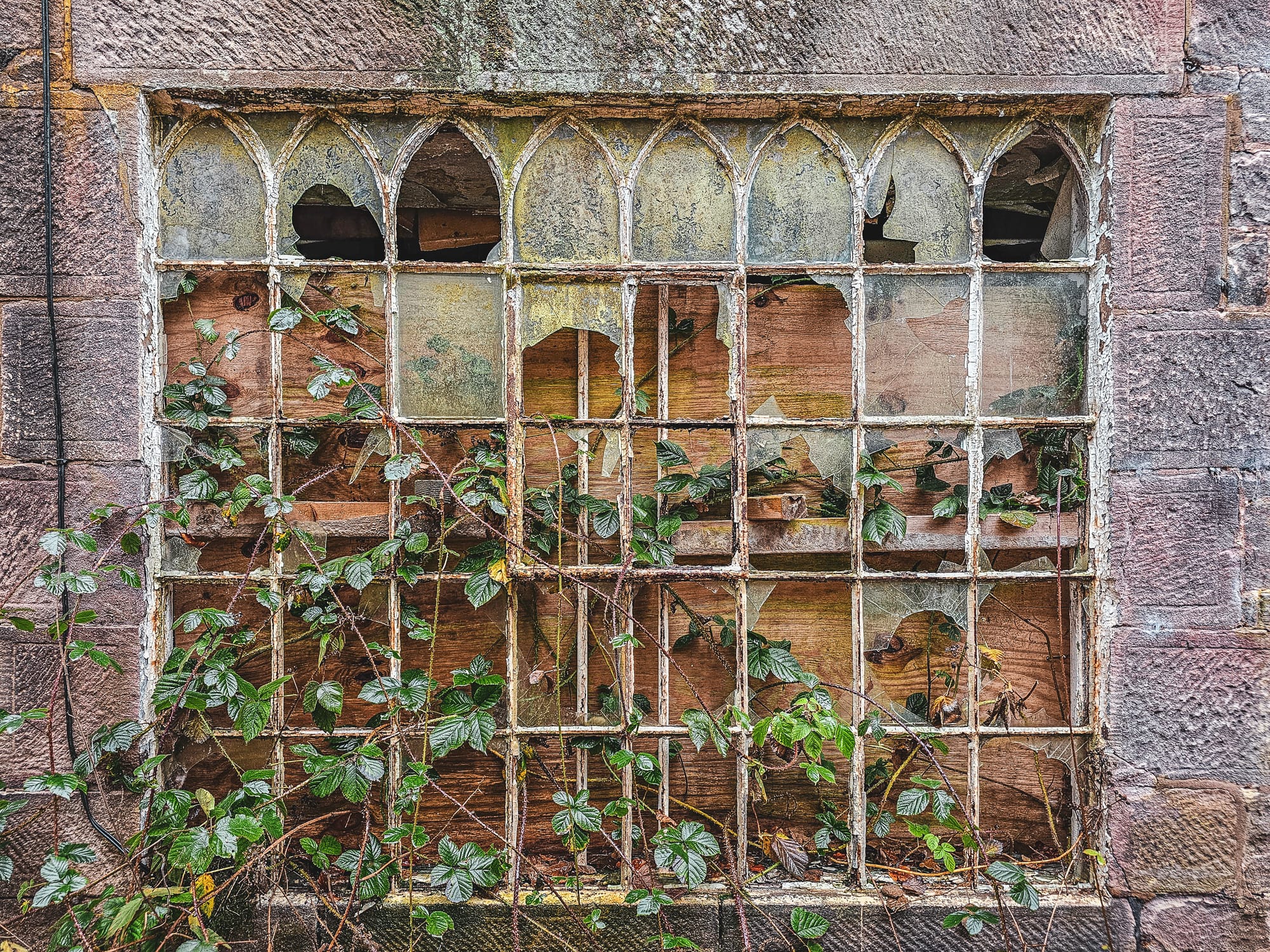
2016 to today
In 2016, Cliffe Park Hall embarked on a new phase under new ownership. On October 18th, the property was acquired by Cliffe Park Hall Limited, a company registered at Plantation Road, Newstead Industrial Trading Estate, Stoke-On-Trent, with the registration number 10191354. The key figures behind this company are Donna Beaumont and Stephen Paul Beaumont, with their business address at the Drayton Beaumont Building, Merrial Street, Newcastle-Under-Lyme, Staffordshire.
I paid for the land registry details to find out who owned the property, feel free to download them yourself and have a look here.
This change in ownership marked a significant transition for Cliffe Park Hall, which had been sold for £480,000. Despite showing signs of deterioration, the hall retained its historical charm and architectural significance. Its new proprietors, Cliffe Park Hall Limited, represented by the Beaumonts, were set to embark on the challenge of managing and possibly restoring this historic property.
The sale to Cliffe Park Hall Limited and the involvement of Donna and Stephen Paul Beaumont introduced the possibility of new developments for the hall. Given its state at the time of sale, there were plans for restoration or renovation to revive the building’s structural integrity and aesthetic appeal. The planning application, identified as SMD/2020/0047, was submitted by Mr. & Mrs Beaumont for Cliffe Park Hall, a historic Grade II listed building in Staffordshire. This application decided on November 9, 2020, focused on necessary repair works to preserve the building.
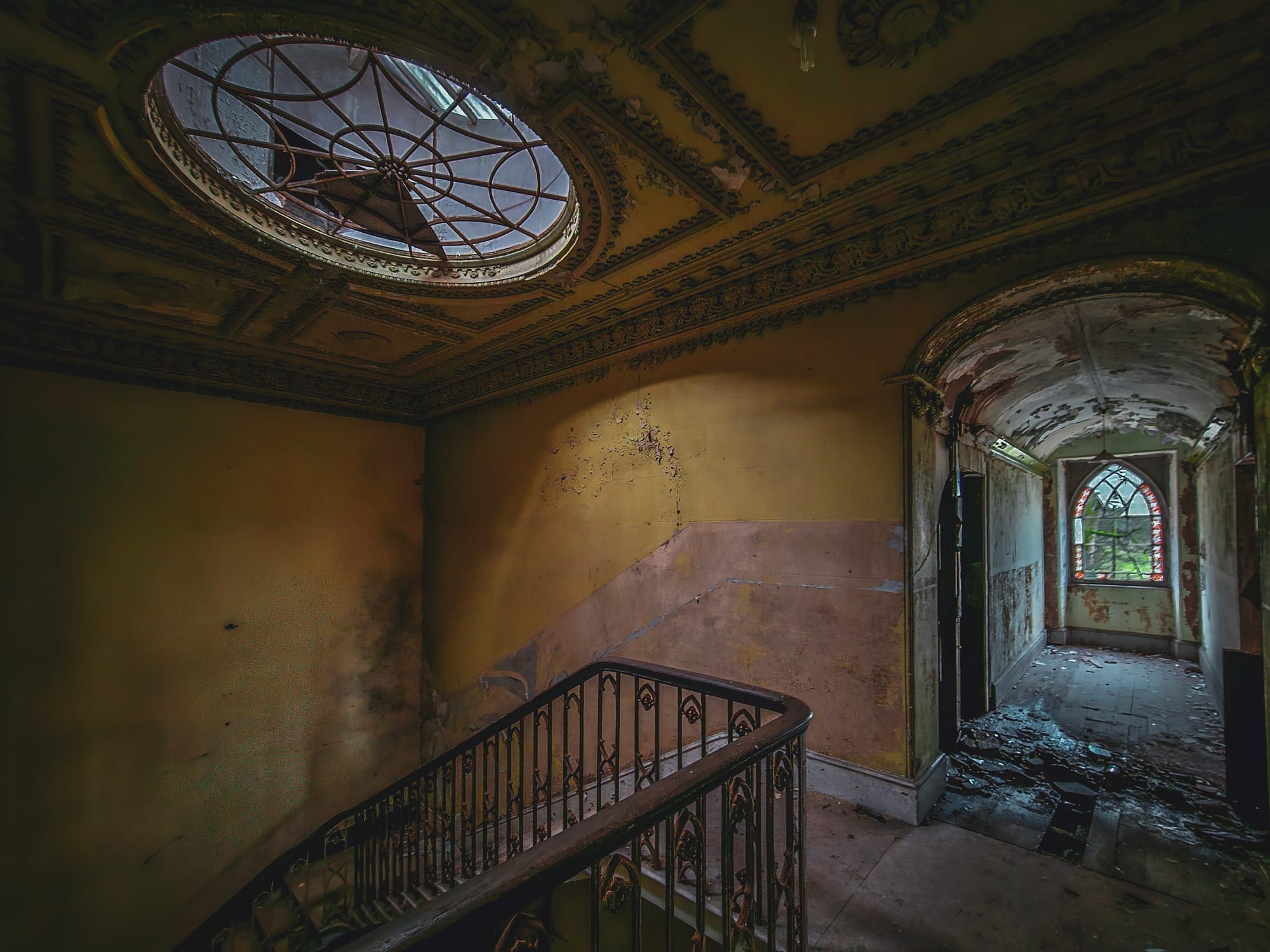
The main work included replacing the old lead roof with a new steel one, fixing the walls, and refurbishing the windows and doors. Initially, there was a plan to install double-glazed windows, but this was changed to repairing or replacing the existing windows and doors to keep the building's historic look.
The application had to be adjusted after initial feedback, especially regarding the details provided about how the new roof and windows would affect the building's historic character. The revised application removed the double glazing and better explained why a steel roof was needed, considering theft and cost.
The local conservation officer, after reviewing these changes, did not object to the plans and recommended approval with certain conditions. These conditions were about making sure the repairs and materials used matched the building's historical style and importance.
In summary, the application was approved with the condition that the repair work respects the building's historical value, ensuring that Cliffe Park Hall's architectural and historical integrity is maintained.
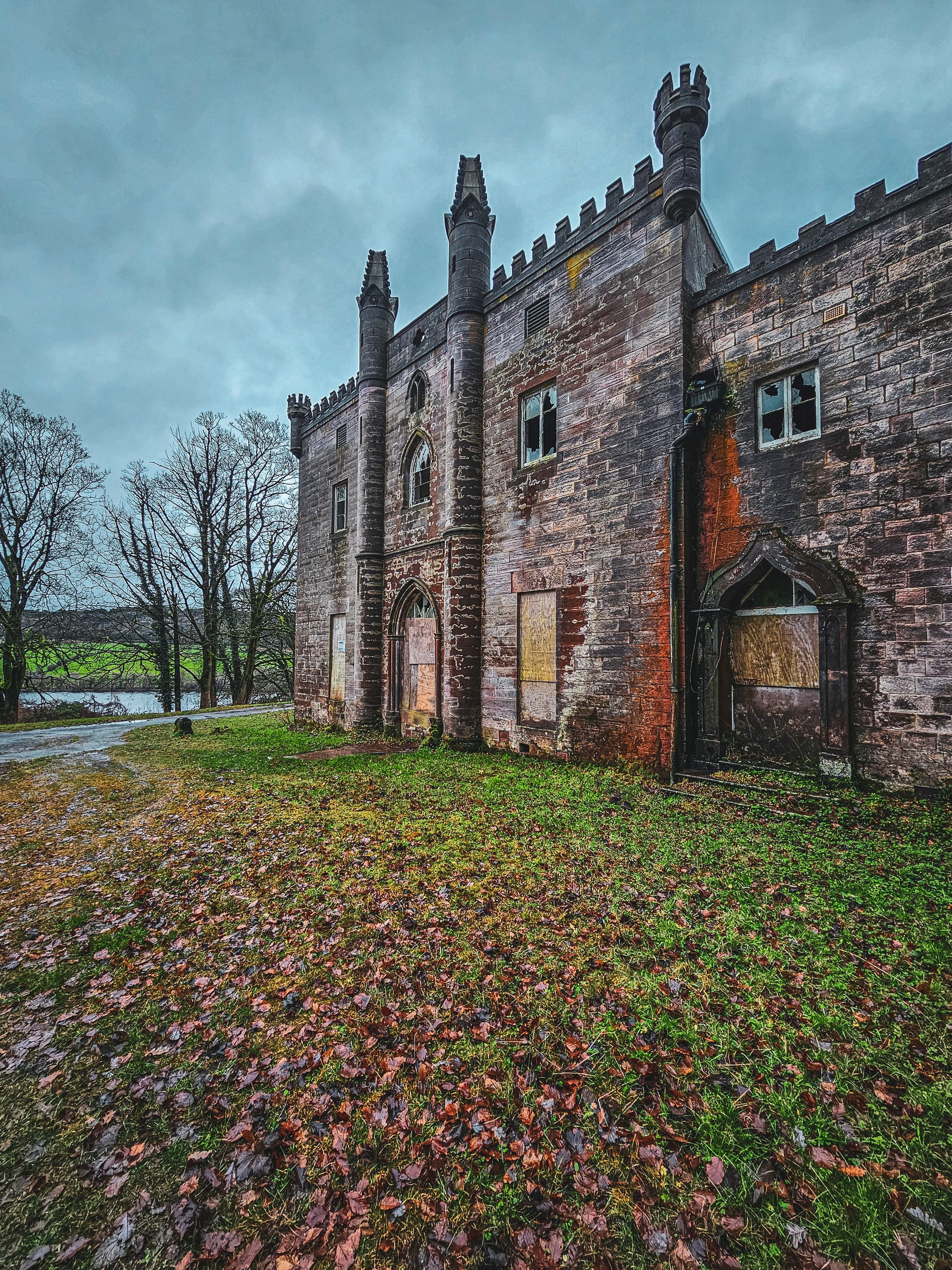
Such efforts would be crucial in preserving the hall’s rich heritage, which includes its distinctive Neo-Gothic and Georgian architectural features dating back to its construction in the early 19th century.
As of 2023, Cliffe Park Hall, under the ownership of Cliffe Park Hall Limited, managed by Donna and Stephen Paul Beaumont, has unfortunately not undergone any significant restoration or renovation work. Consequently, the hall is in a severe state of disrepair. This lack of maintenance has further exacerbated the condition of this historic property, heightening concerns about its future and preservation.
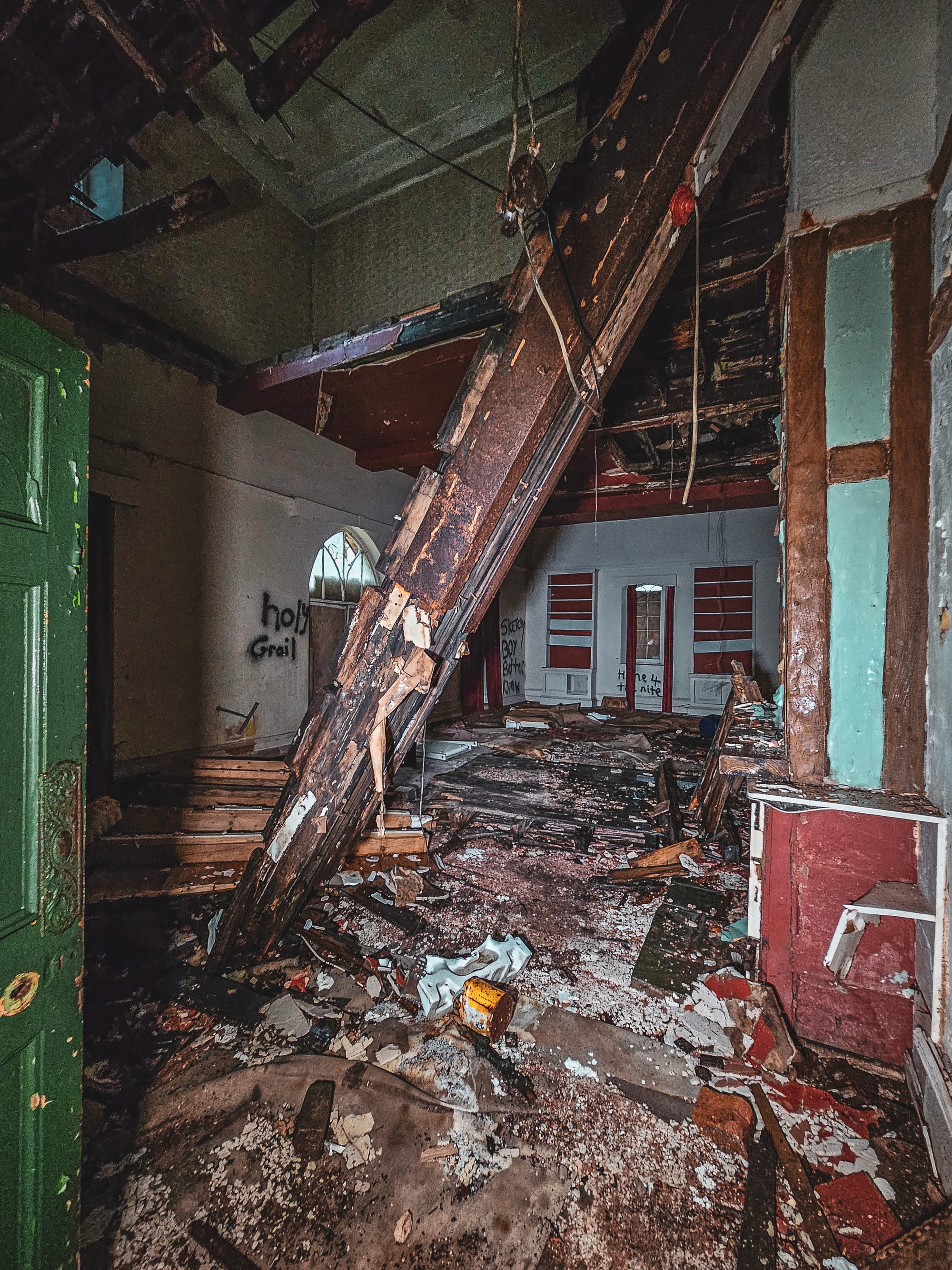
Thank you for reading!
If you like what you have read, please feel free to support me by following and signing up for my newsletter and/or buying me a coffee!

If you love our local history, don't forget to follow me, check out more of my videos and my website http://www.theredhairedstokie.co.uk
You can now also join my Patreon - www.patreon.com/TheRedHairedStokie
Check out my recommended reading list
